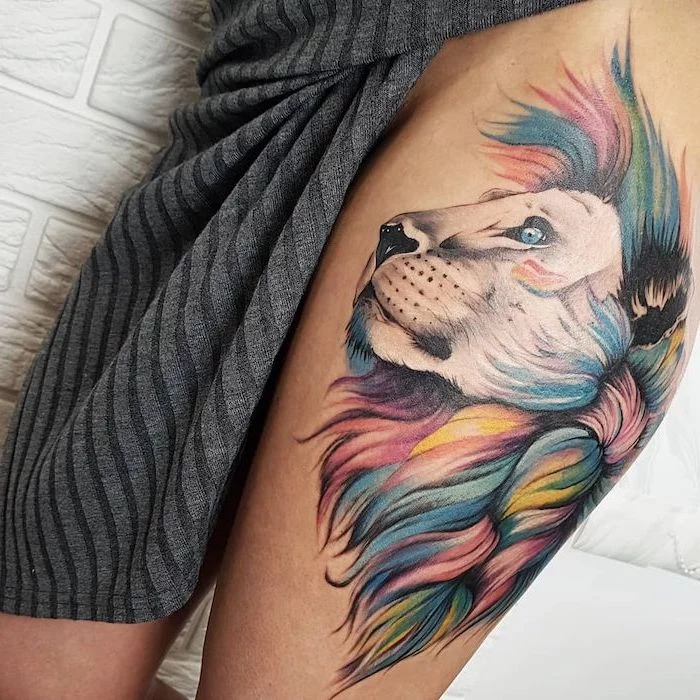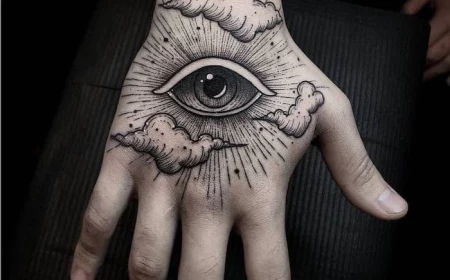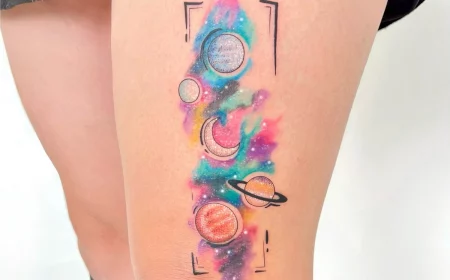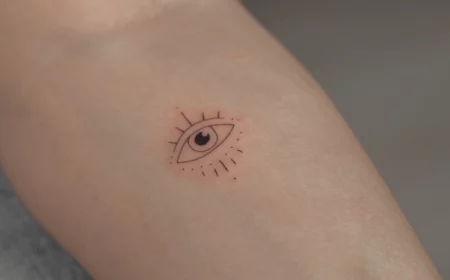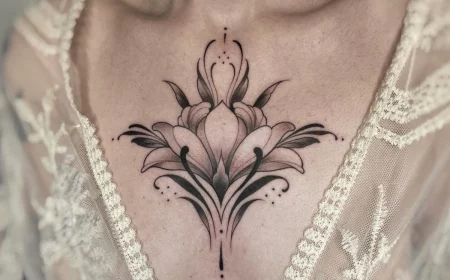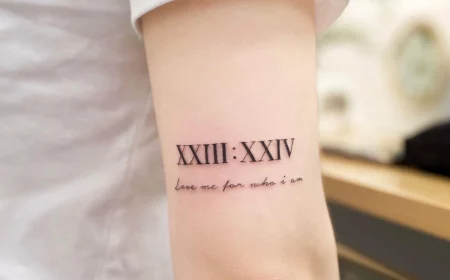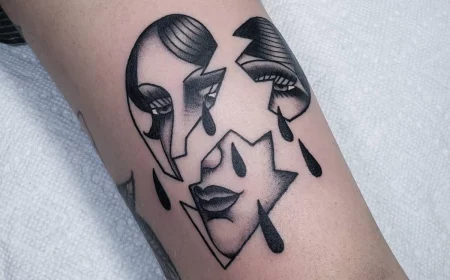Thinking About a Lion Tattoo? Read This First.
I’ve been holding a tattoo machine for a long, long time, and I’ve seen more design trends than I can count. But some things just never go out of style. The lion is one of them. It’s a classic for a reason.
In this article
- What Does a Lion Tattoo Really Mean?
- Designing a Lion That Actually Fits Your Body
- Picking the Right Style for Your Lion
- Let’s Talk Money: Budgeting for Your Lion Tattoo
- The Toughest Jobs: Covering Up Old Tattoos and Scars
- Aftercare: How to Protect Your Investment
- 1 enemy of your tattoo. UV rays break down ink and fade colors. A crisp black and grey lion can turn into a fuzzy grey mess after years of sun. Once it’s healed, make sunscreen your best friend. It’s the single best thing you can do to keep your lion looking bold for life. Finding the Right Artist: Your Most Important Decision All the advice in the world means nothing if you go to the wrong artist. This isn’t just about art; it’s about your health and safety. First, the non-negotiables. A professional studio should be obviously clean. If you get weird vibes, walk out. Look for an artist who opens new, sterile, single-use needles in front of you and wears gloves the entire time. They should have their health department certificate on display. Don’t be afraid to ask to see their autoclave (the sterilization machine) and its recent test results. A good shop will be proud to show you. So, how do you find your artist? Here’s a quick action plan: Get Inspired, But Be Flexible. Collect photos of lion tattoos you love, but focus on the style and feeling you’re going for, not copying one exact image. Become an Instagram Detective. This is the best modern tool. Search hashtags for the style you want, like
- realistictattoo, or
- nyctattooartist,
- Inspiration Gallery
I still remember one of the first big back pieces I ever did. It was for a retired firefighter, a massive, calm lion just resting and watching. He specifically didn’t want a roaring beast. He wanted a symbol of quiet strength, of a long watch finally being over. That project taught me something important: a lion tattoo isn’t just about raw power. It’s a deeply personal mark, and you’ve got to understand what it means to you before the needle even starts buzzing.
So many people walk in with a picture they found online and just say, “I want this.” My first question is always, “Okay, but why? What does this lion mean to you?” This guide is basically that conversation, expanded. We’re going to dig into the real meaning behind the image, the different ways to bring it to life, and all the practical stuff you need to know to get a tattoo that you’ll love for the next 50 years.
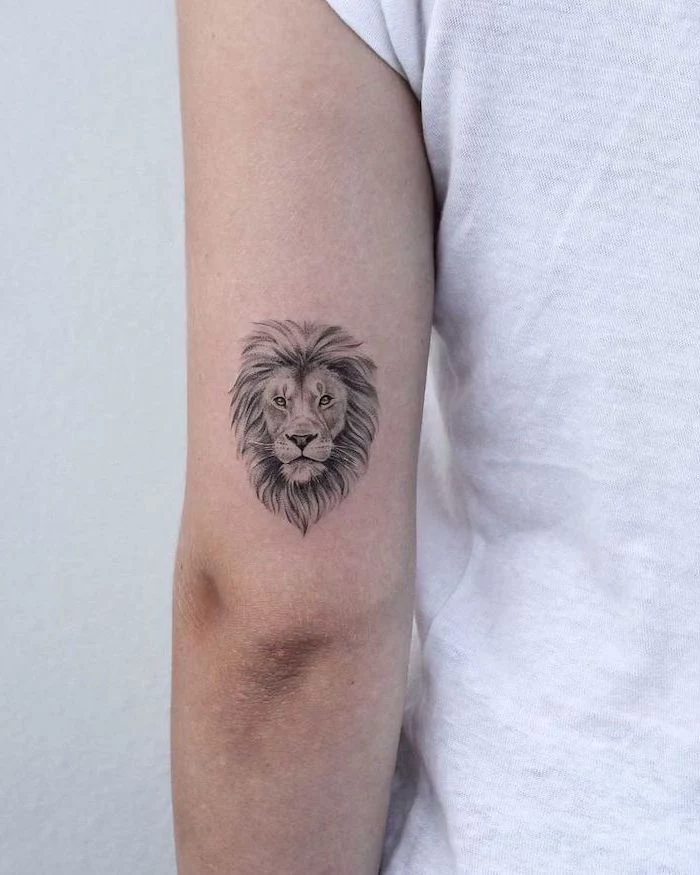
Oh, and a quick tip before we even start: The best thing you can do for your future tattoo, starting today? Moisturize! Healthy, hydrated skin takes ink so much better. If you know where you want the tattoo, start applying a good lotion to that spot daily, even a few weeks before your appointment. It makes a huge difference.
What Does a Lion Tattoo Really Mean?
Everyone gets the whole “king of the jungle” thing. It’s shorthand for strength, courage, and leadership. And that’s all true! But the best tattoos come from a meaning that’s a little deeper than the surface.
It’s Not Just About Being Loud and Strong
True strength doesn’t always have to roar. Sure, a roaring lion can be a powerful symbol of a battle you’ve won or a challenge you’re screaming back at. But honestly, the calm, watchful lion often says something more profound. It can represent inner confidence, self-control, and the quiet authority that doesn’t need to announce itself. It’s the strength of character to walk away from a fight. A lot of clients, like that firefighter, pick this vibe to represent their own resilience and hard-won peace.
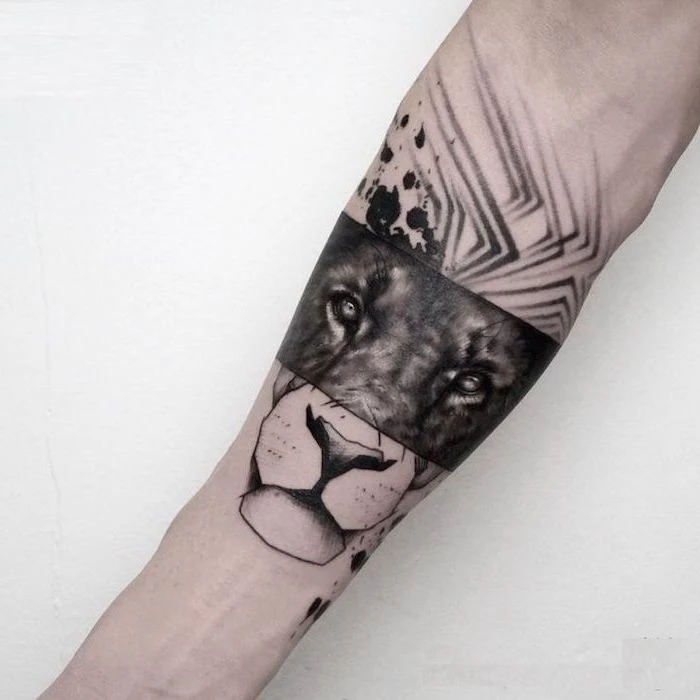
Let’s Talk About the Lioness
Don’t overlook the power of the lioness. In any pride, the lionesses do the heavy lifting—they hunt together, using strategy and teamwork to succeed. They are also the fiercest protectors of their cubs. I’ve tattooed countless lionesses on both women and men who want to honor a powerful matriarch in their lives. It’s become a symbol for single moms, female entrepreneurs, and anyone who gets things done with smarts and loyalty. A lioness with her cubs is one of the most direct and beautiful statements of family protection you can get.
Deeper Symbolism from Around the World
The lion’s image carries a lot of weight in different traditions, and tapping into that can add another layer to your design.
- The Crowned Lion: In some spiritual traditions, a lion shown with a crown or banner is a powerful icon of divinity, noble lineage, and righteous strength. It’s a very specific look, so if this resonates with you, it’s important to find an artist who can render that iconic imagery with respect.
- Guardian Lions: You’ve probably seen those stylized, almost dog-like lion statues guarding temples in Asian art. These are powerful symbols of protection, often called Foo Dogs or Shishi. They almost always come in pairs—a male and a female—representing the balance of yin and yang. A tattoo of one of these is a bold statement of protection.
- The Invincible Lion: Classic lore tells stories of a mythical lion whose hide was impenetrable. It couldn’t be defeated by normal means and had to be overcome with bare hands and sheer will. A tattoo that references this theme can be a personal symbol of overcoming a seemingly impossible challenge.
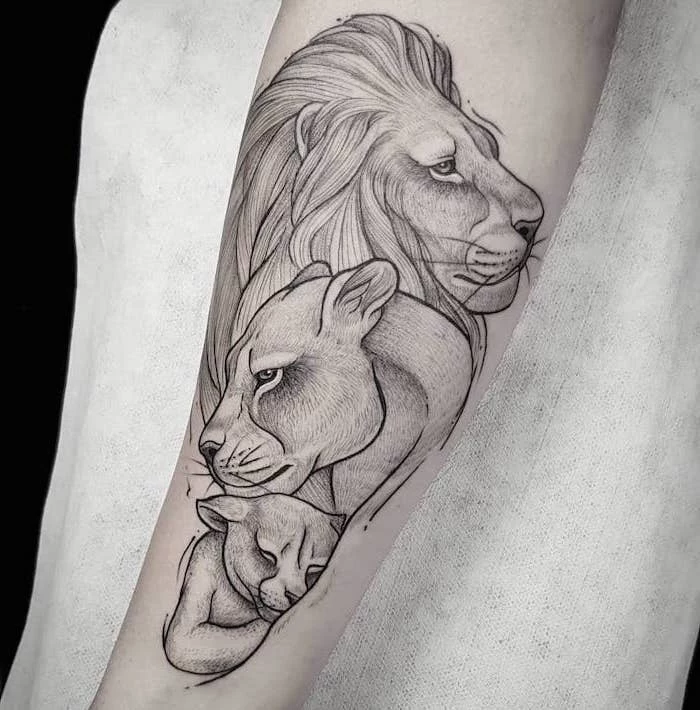
Designing a Lion That Actually Fits Your Body
A tattoo isn’t a sticker you just slap on. It’s a piece of art that has to work with the flow and shape of your body. The most critical part of the process happens in the consultation, long before you hear the buzz of the machine.
Placement is Everything
Your body isn’t a flat sheet of paper. It has muscles that flex and curves that move. A great artist uses this to their advantage. For instance, placing a roaring lion on a bicep or chest muscle can make it look like it’s flexing and moving with you. A sleek, elegant lioness can flow beautifully down a forearm or thigh. A big, seated lion looks incredible on the flat plane of the back, creating a powerful centerpiece.
A common mistake I see is clients wanting a super detailed design in a tiny space. That just won’t work. We have to think about how the tattoo will look not just when you’re posing for a photo, but when you’re walking, lifting, and just living your life. I’ll often draw right on a client’s skin with markers to show them exactly how the design will wrap and fit their body. Be open to your artist’s advice on this—they know what will look good in motion.
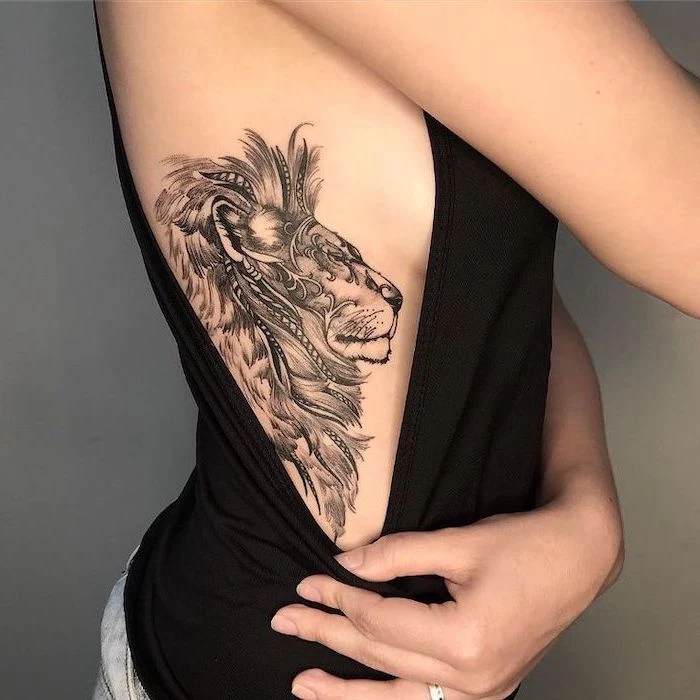
Designing for the Next 20 Years, Not Just for Instagram
The internet is flooded with hyper-realistic tattoos that have impossibly tiny details. They look amazing in a fresh, close-up photo. Here’s the hard truth: skin ages. Ink settles and spreads slightly over time (we call it “line spread”). All those microscopic hairs in a lion’s fur can blur into a muddy, unrecognizable patch after 10 or 15 years.
A smart artist designs for the future. We use strong outlines as a foundation and create the illusion of fine detail with clever shading and contrast. We make sure there’s enough negative space—or “skin breaks”—to let the tattoo breathe and age gracefully. I’m always upfront with my clients about this. I’d rather do a slightly less-detailed tattoo that will look awesome in two decades than a hyper-detailed piece that will be a blurry mess in one.
Quick tip: When you’re looking at an artist’s portfolio, tell them you’re impressed by their HEALED work. Saying, “I love how this 2-year-old tattoo on your page still looks so sharp,” tells them you’re thinking about the long game, not just the temporary Instagram wow-factor.
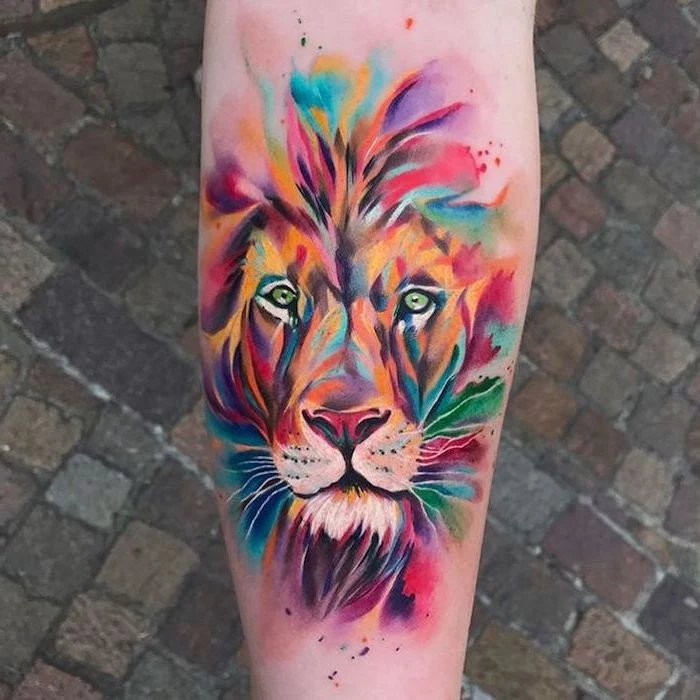
Picking the Right Style for Your Lion
Saying you want a “lion tattoo” is like saying you want a “car.” Do you want a rugged work truck or a sleek sports car? The style changes everything, and an artist who is a master of one isn’t necessarily the right person for another.
Realism (Black & Grey or Color)
This is the photorealistic style most people imagine. The goal is to make the lion look like it could jump right off your skin. It takes a ton of skill in shading and blending, building up fur texture layer by layer. The most important part? The eyes. Dead eyes make for a dead tattoo. This style takes time and patience, often multiple long sessions. It ages decently if done with enough contrast, but fine details can soften over the years.
American Traditional
This style is built like a rock. It features bold black outlines, a limited color palette (think classic red, yellow, green, and black), and heavy shading. A traditional lion isn’t realistic; it’s a powerful, stylized symbol of a lion. These designs are simple and clean, which means they age incredibly well. The lines stay crisp and the colors stay bright forever. It’s the best choice for a powerful, symbolic statement that you want to be recognizable from across the room.
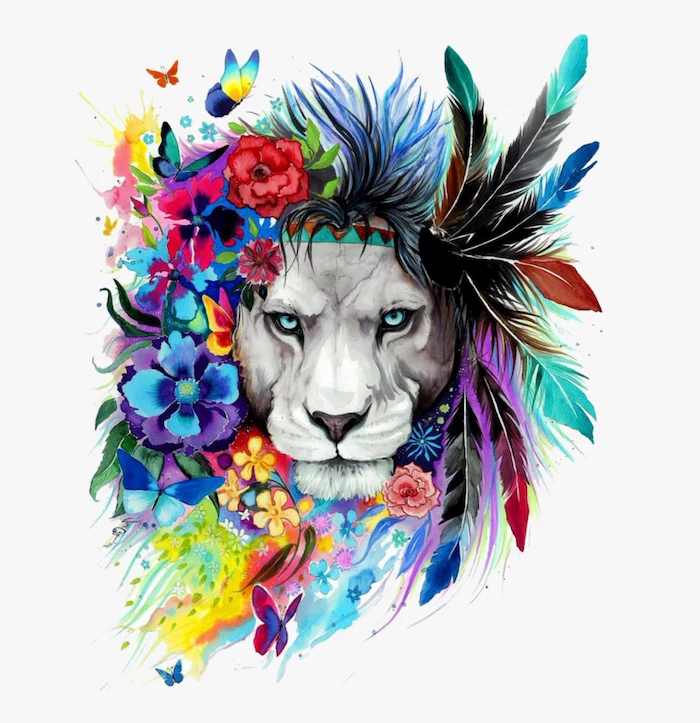
Neo-Traditional
This is the perfect middle ground. It takes the bold, durable outlines of American Traditional but adds way more detail, a much wider range of colors, and more sophisticated shading. You might get a lion with a mostly realistic shape but surrounded by decorative elements like flowers or jewels. It’s a super popular style for animal tattoos because it offers the best of both worlds: the longevity of a traditional tattoo with the detail of a more modern piece.
Japanese-Inspired
While lions aren’t from Japan, the Kara-shishi (often called a ‘Chinese lion’) is a cornerstone of traditional Japanese tattooing. It’s a mythical, protective beast, usually shown with curly, flowing manes and a powerful, muscular body. In this style, tattoos follow classic rules—the lion is often paired with peonies (symbolizing elegance) and set against a background of wind or water. These are typically large-scale projects, like a full back piece or a sleeve, that tell a story. This style demands a specialist who lives and breathes its rules and history.
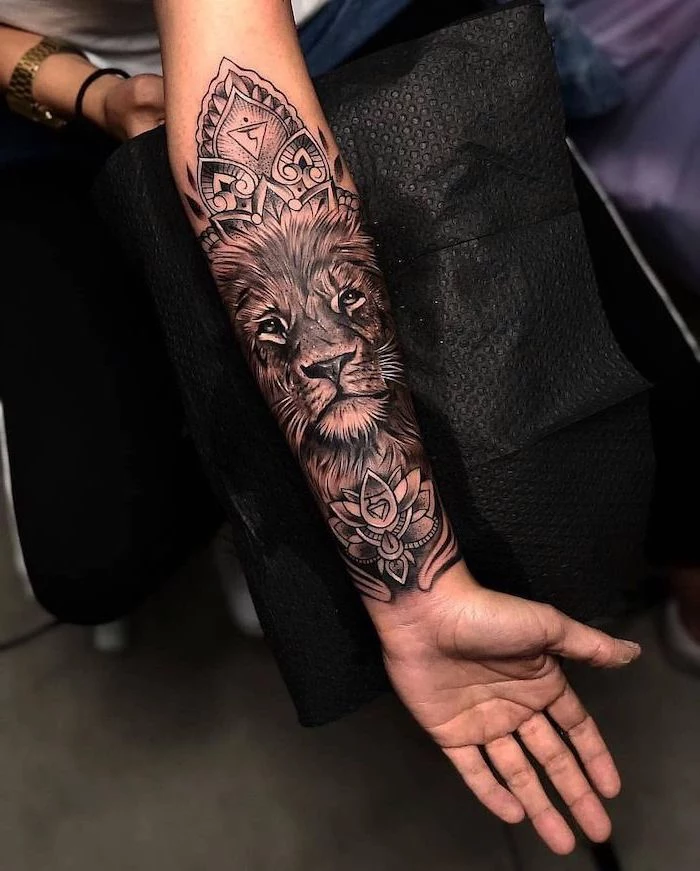
Let’s Talk Money: Budgeting for Your Lion Tattoo
This is the number one question everyone has but is often afraid to ask. You see “good tattoos aren’t cheap” all the time, but what does that actually mean? Let’s be real about it.
Most high-quality, experienced artists charge by the hour. Rates can vary wildly depending on their skill level and your city, but you should expect to pay anywhere from $150 to over $300 per hour. Some artists might give you a flat rate for a specific piece, but that price is based on how many hours they estimate it will take.
So, that cool, palm-sized, detailed lion you have in mind? You’re probably looking at a $400 to $800+ investment. A larger piece, like one that covers your whole forearm, could easily be $1,500 or more, spread across a couple of sessions. A full sleeve? That can be a 20-40 hour project. Yes, it’s a lot of money. But you are paying for years of training, thousands of dollars in professional equipment, and a permanent piece of art on your body. It’s an investment, not a t-shirt.
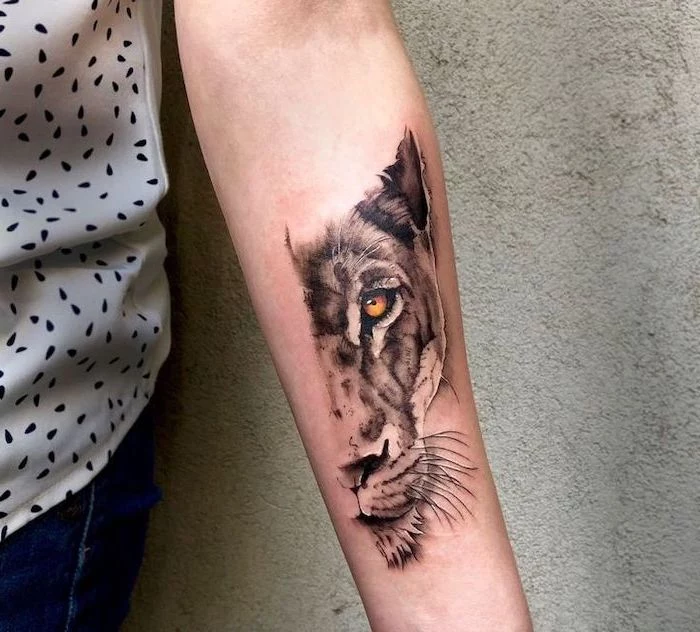
The Toughest Jobs: Covering Up Old Tattoos and Scars
Sometimes the most rewarding work is fixing something old. A lion is actually a fantastic choice for a cover-up because its dark, dense, textured mane is perfect for hiding old, faded ink.
I once had a client with a blurry, decades-old name on his shoulder that he was tired of seeing. We designed a roaring lion’s head, and I strategically used the darkest, densest parts of the mane to completely swallow the old ink. You’d never even know it was there. The main rule of a cover-up is that the new tattoo has to be bigger and darker than the old one. You can’t cover black ink with yellow. It’s like solving a puzzle, and it requires a client who is flexible with the final design.
Tattooing over scars is also possible but requires an artist with specific experience. Scar tissue is unpredictable; sometimes it takes ink perfectly, other times it can “blow out” or reject the ink. The texture of a lion’s fur can be a brilliant way to camouflage the texture of a scar, making it part of the art.
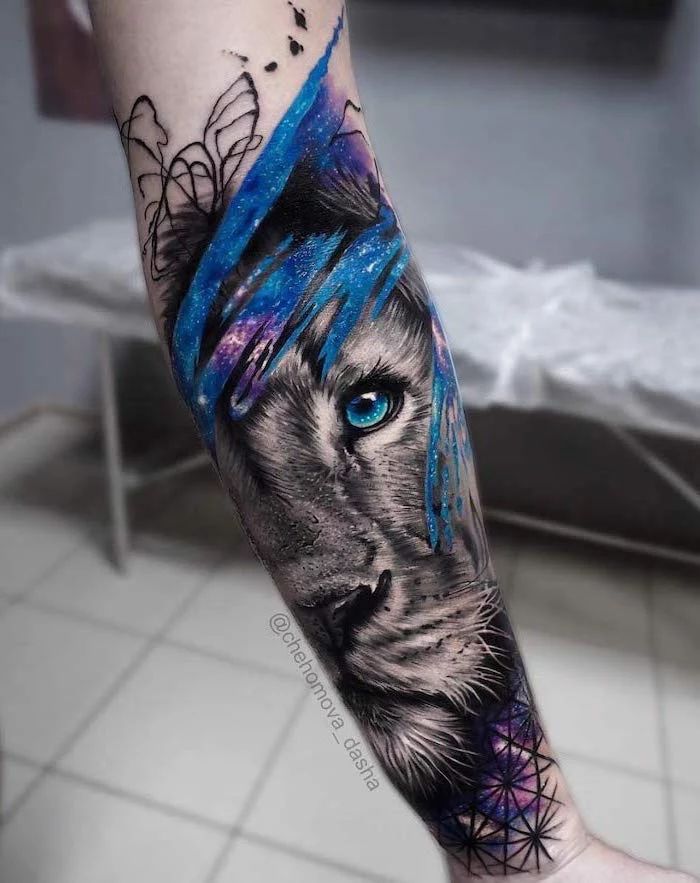
Aftercare: How to Protect Your Investment
Once you walk out of the studio, that tattoo is your responsibility. I’ve seen technically perfect tattoos get ruined by bad aftercare. Please, just follow your artist’s instructions. They all vary a little, but the main points are the same.
For the first few weeks, the tattoo will peel and itch like a sunburn. This is totally normal. The most important rules are: Do not pick the scabs and do not scratch it. Seriously. Picking at it can literally pull the ink right out of your skin, leaving you with patchy spots that need a touch-up.
To make it easy, here’s a simple shopping list for your aftercare kit. You can get all this at a pharmacy or Target.
- Gentle, Fragrance-Free Soap: A simple antibacterial soap like Dial Gold is a classic choice.
- Paper Towels: For patting the tattoo dry. Don’t use a bath towel, which can hold bacteria.
- Unscented Lotion: Apply a very thin layer 2-3 times a day once it starts to feel dry and tight. Brands like Lubriderm, Cetaphil, or Eucerin are perfect. Some artists recommend a product like Aquaphor for the first day or two, but use it sparingly—a thin layer is all you need.
- High-SPF Sunscreen: This is for later, once the tattoo is fully healed.
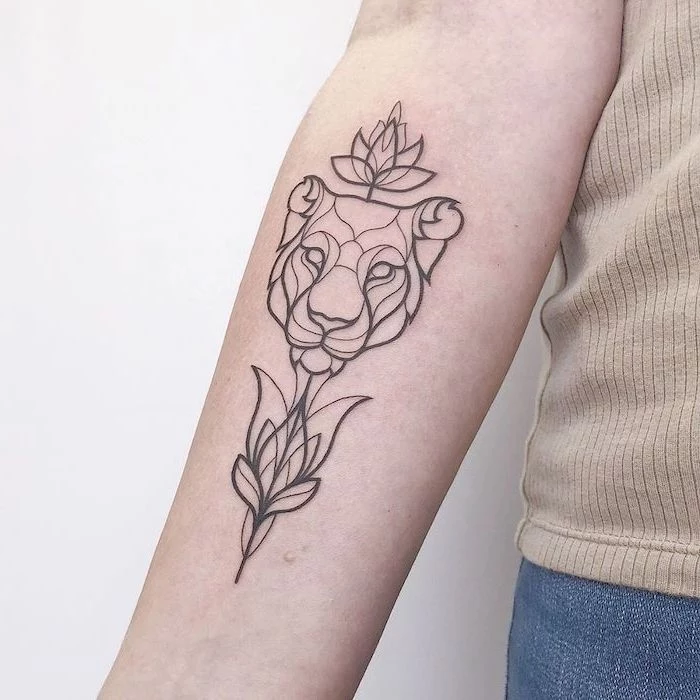
And for long-term care? The sun is the
liontattoo,
realistictattoo, or
neotraditionallion, and add your city (
nyctattooartist,
latattoo). This will show you who is doing what near you.
A lion tattoo is a big deal. It’s a statement. It’s a collaboration between your story and an artist’s skill. Take your time, do your homework, and find an artist you genuinely trust. When you do, you won’t just get a picture of a lion. You’ll get a piece of art that carries your story and stands as a symbol of your strength for a lifetime.
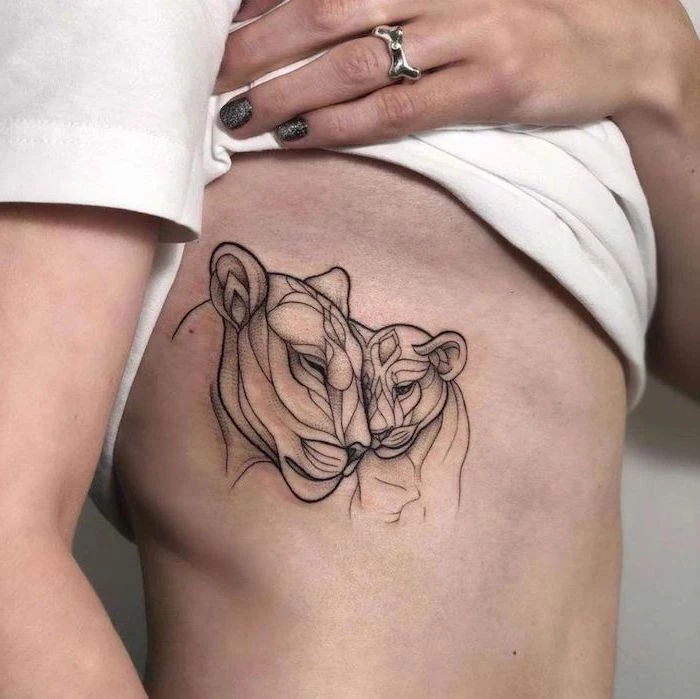
Inspiration Gallery
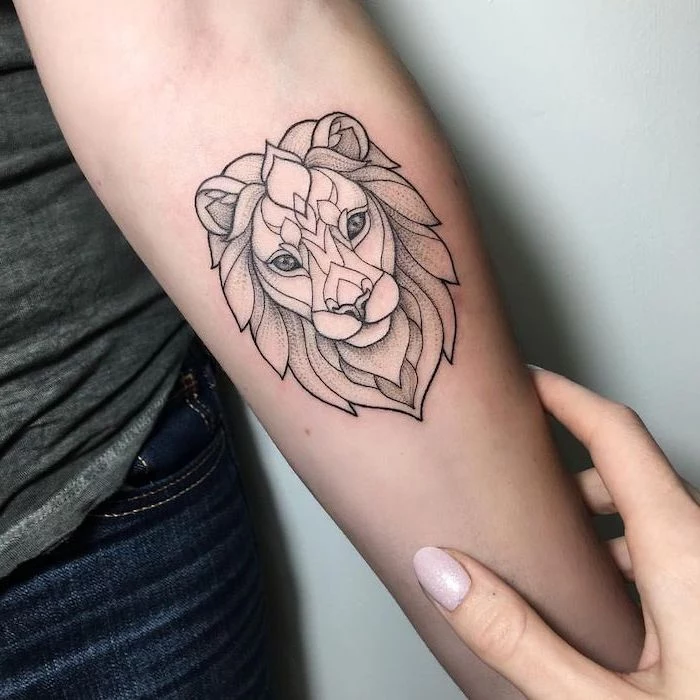
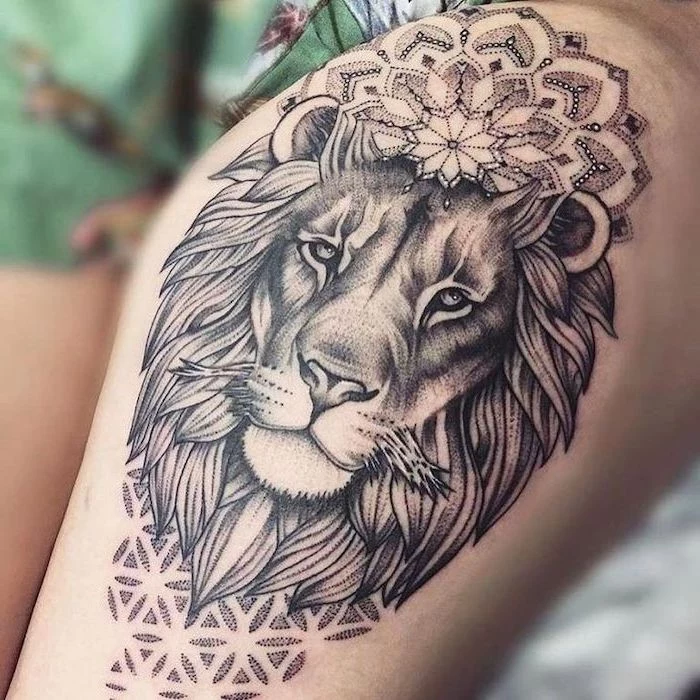
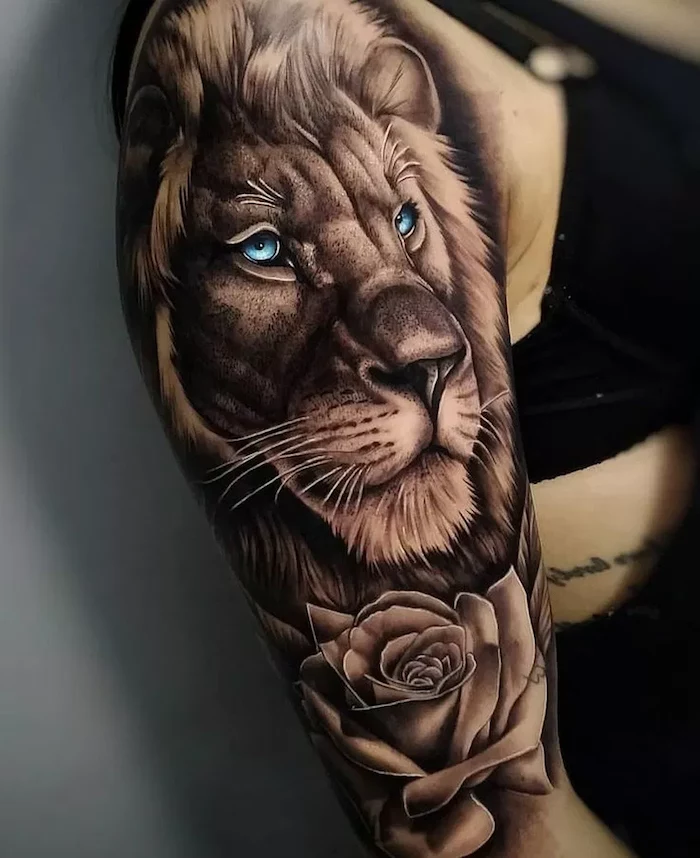
Placement is more than just visibility. A lion on the forearm is a constant statement, seen every time you reach for something. A large back piece is a more private source of strength, revealed on your terms. Consider your daily life, your profession, and how often you want to share this powerful symbol with the world.
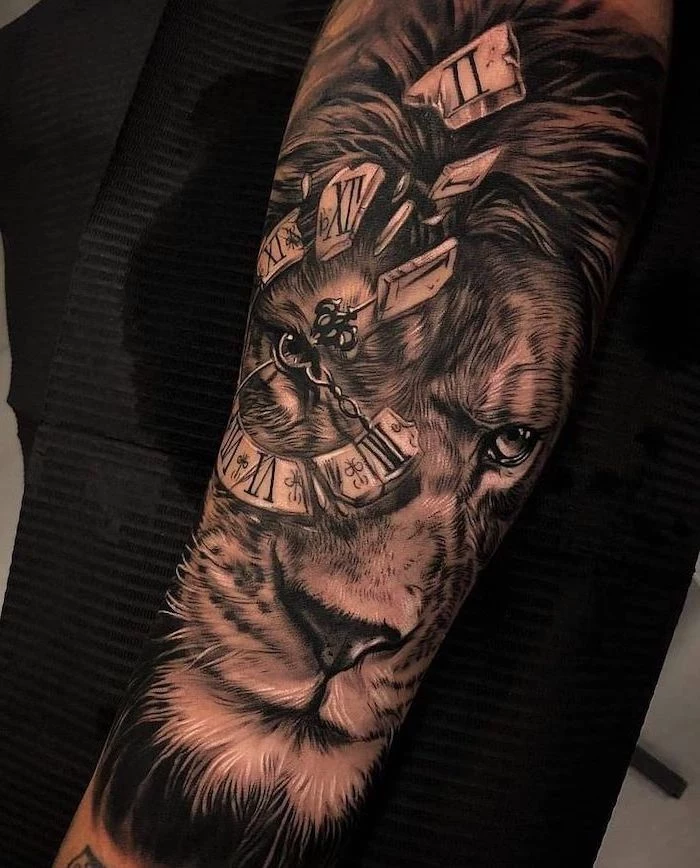
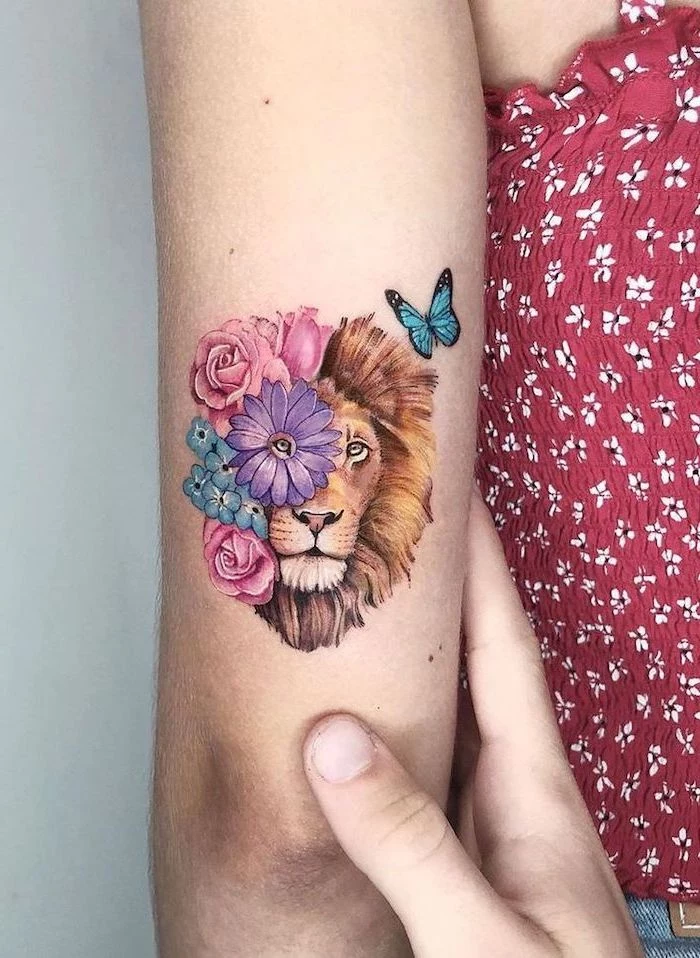
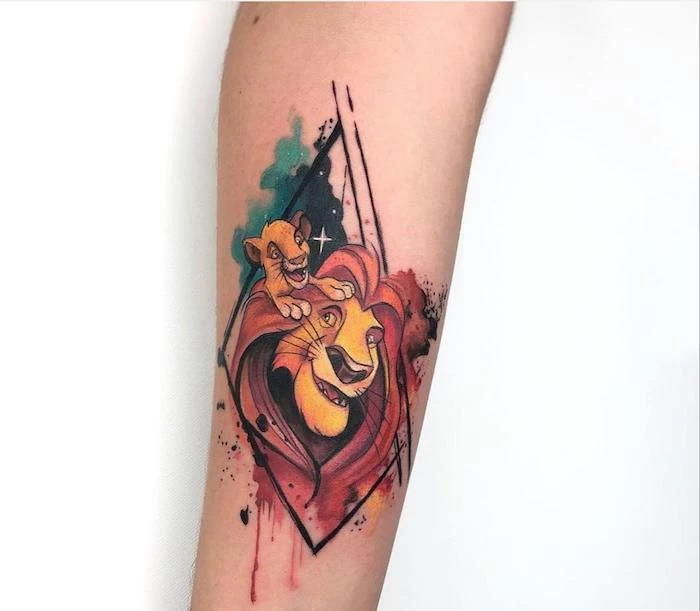
- A fierce, protective lioness often symbolizes feminine power, family, and the leader of the pride.
- A lion paired with a lamb can represent peace, harmony, or the taming of one’s own aggressive instincts.
- Two lions together can signify a powerful partnership, loyalty, or even the duality of one’s own nature.
The secret? Your lion doesn’t have to be alone. Adding another element can deepen and personalize its meaning significantly.
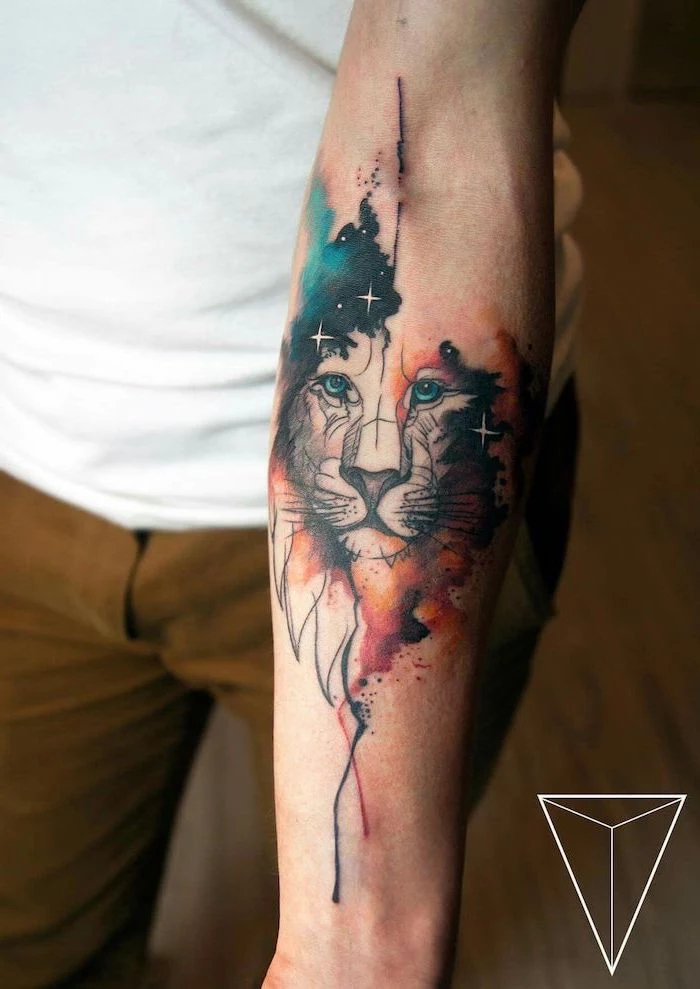
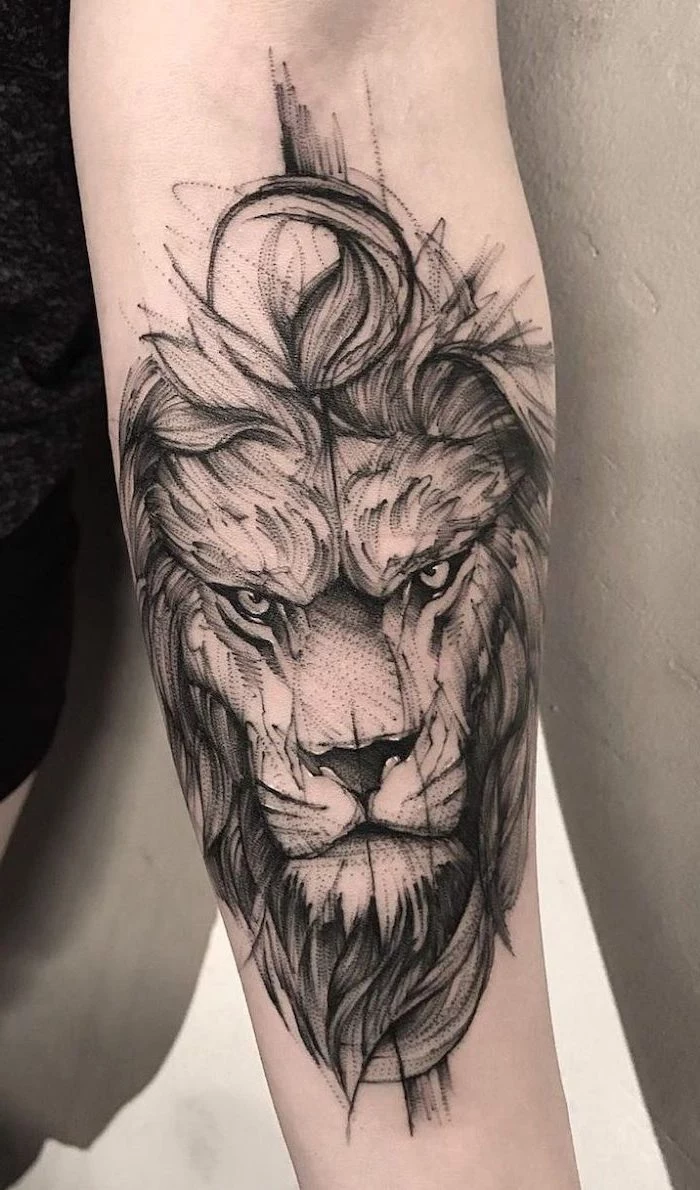
The Mane Event: The texture of the mane can completely change the tattoo’s mood. Discuss with your artist whether you want fine, flowing lines for a sense of elegance and wisdom, or dense, dark, chaotic shading to represent raw power and untamed energy. It’s the detail that often defines the lion’s character.
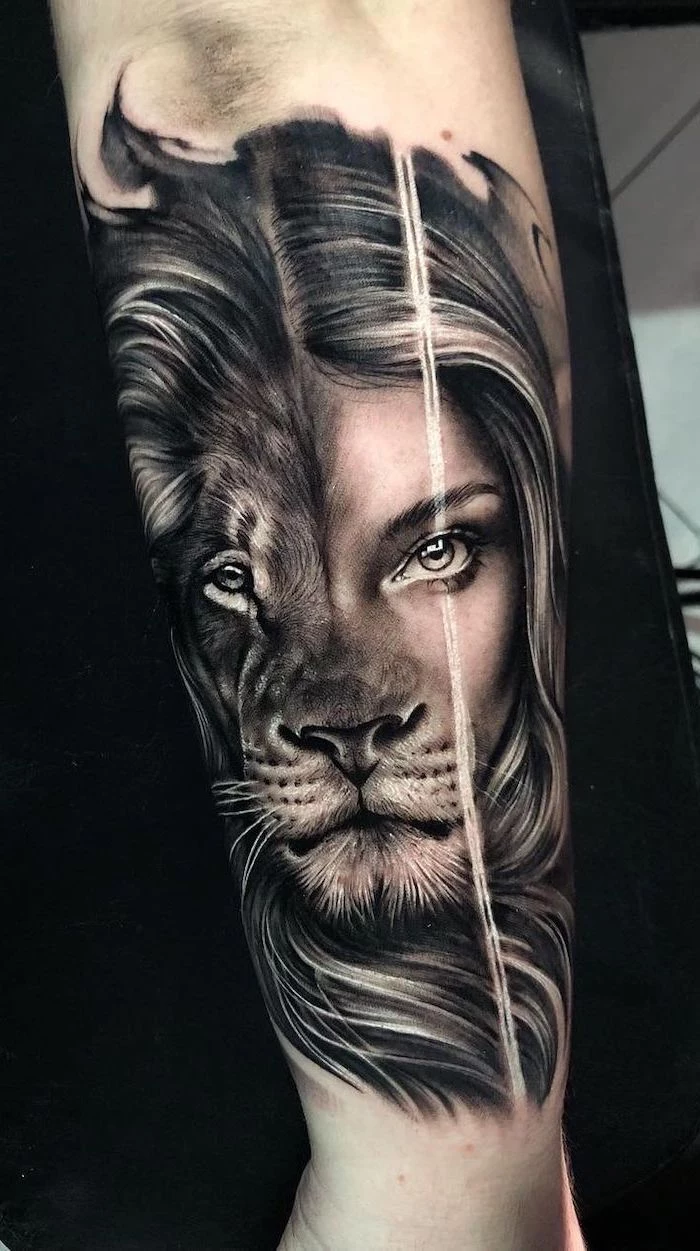
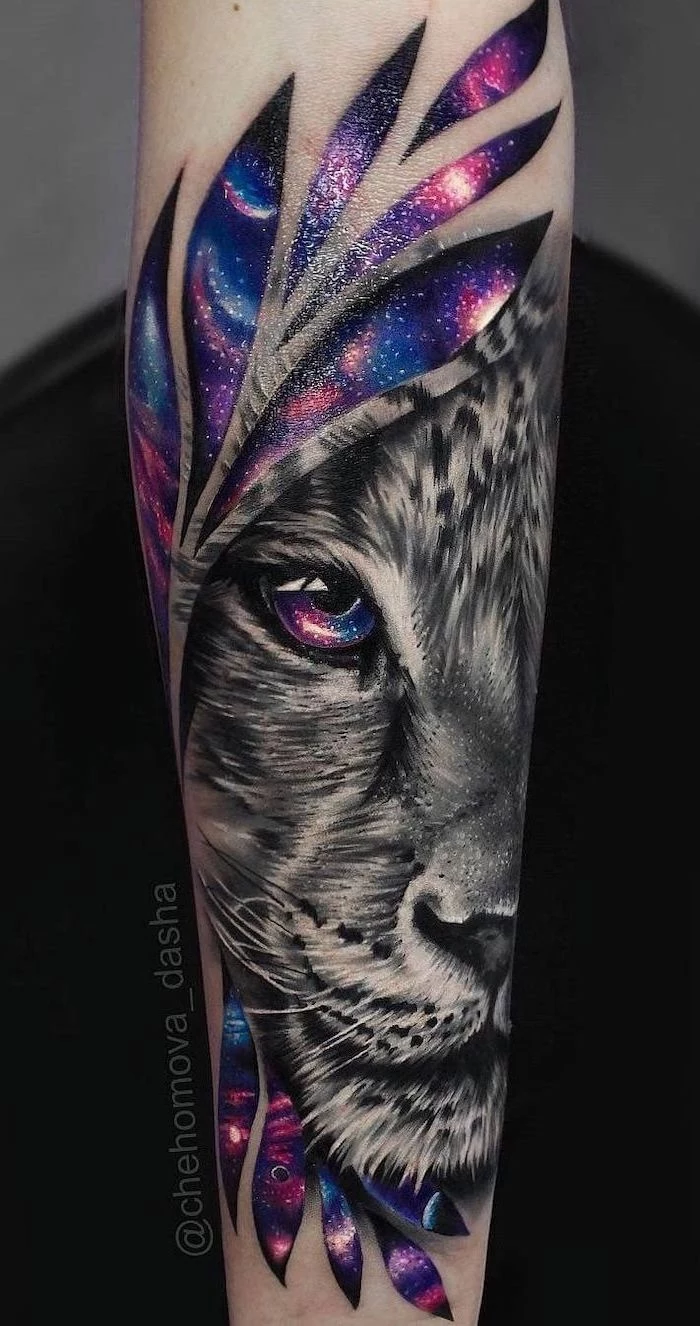
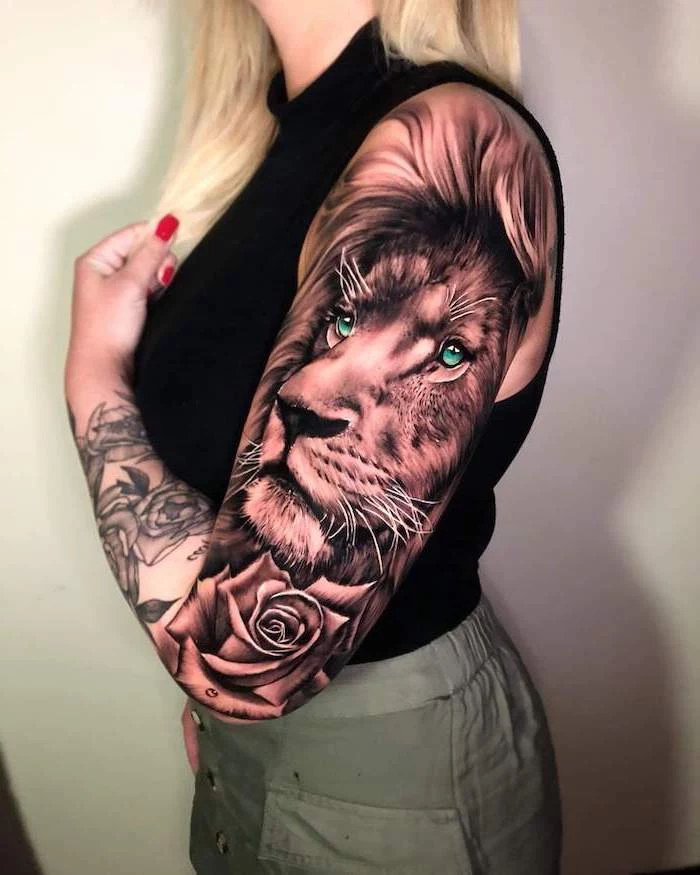
A lion’s roar can be heard from up to 8 kilometers (5 miles) away. In tattoo art, however, a silent, staring lion often conveys a more intimidating and confident power.
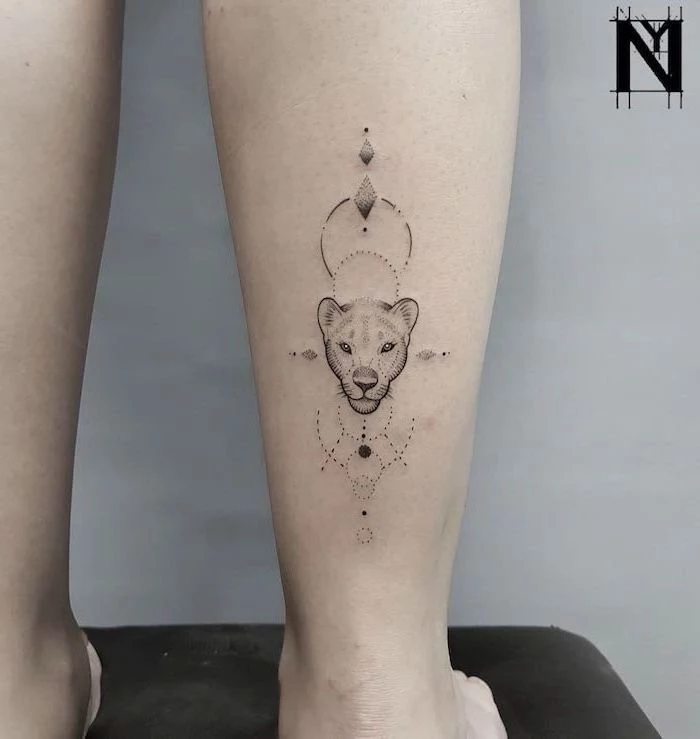
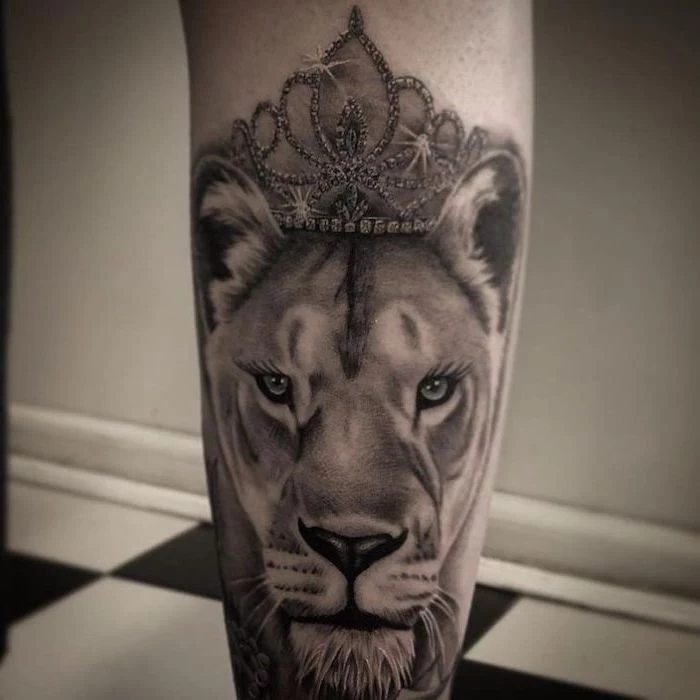
When preparing for your session, especially for a large piece, think beyond just moisturizing. Make sure you get a good night’s sleep, eat a solid meal a few hours beforehand, and bring snacks and water. A well-rested and well-fed body handles the pain and duration of a tattoo session much better.
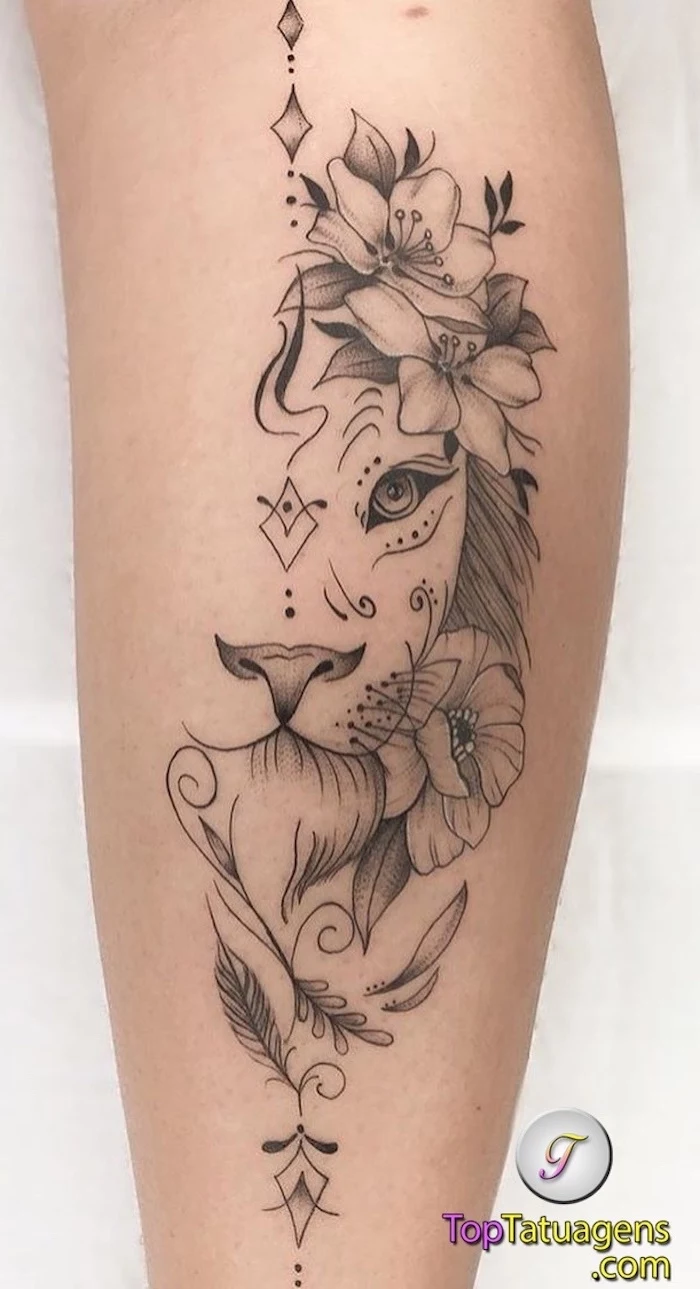
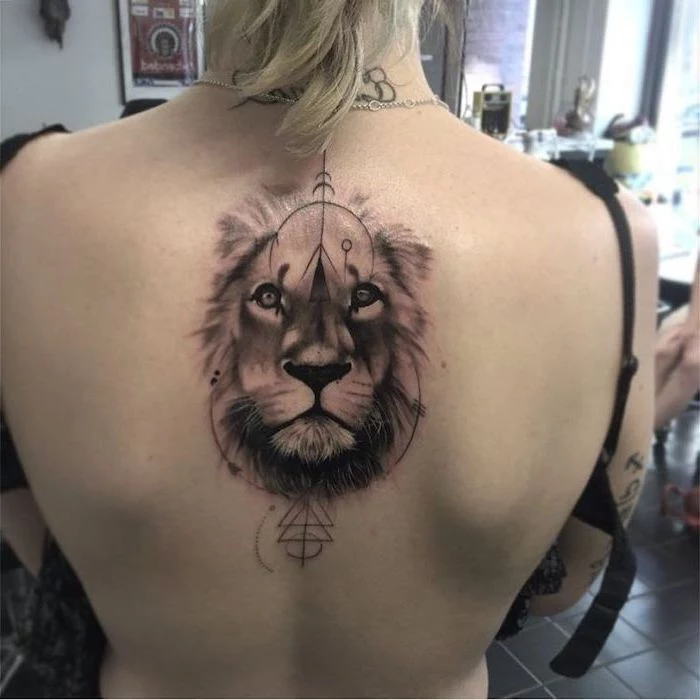
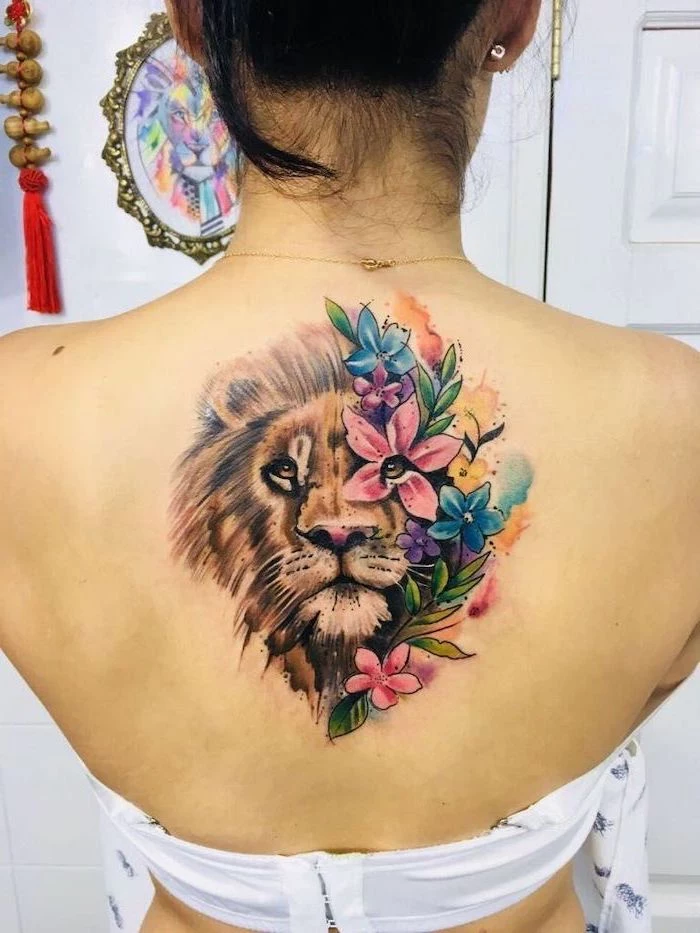
Can I get a hyper-realistic lion on my finger?
While technically possible, it’s strongly advised against. Ink naturally spreads under the skin over time, a process called ‘blowout’. On a small, high-movement area like a finger, the fine lines and delicate shading of a realistic lion will likely blur into an unreadable smudge within a few years.
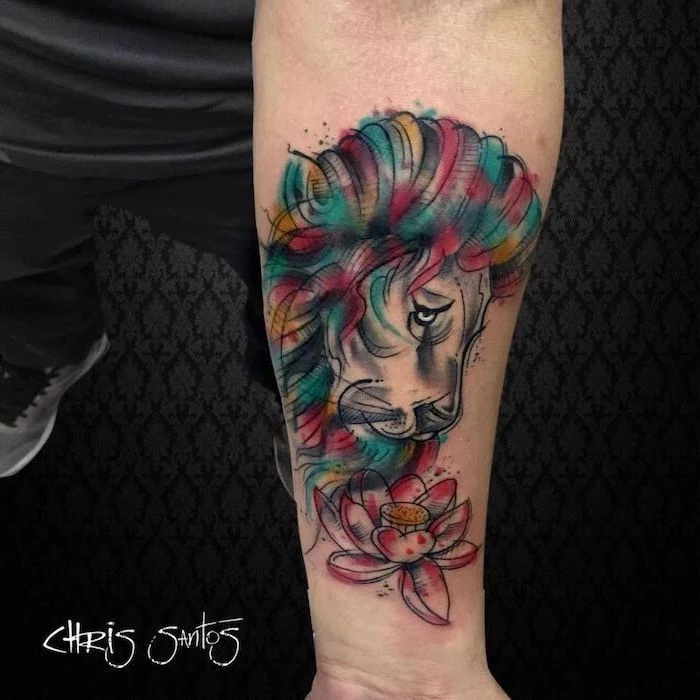
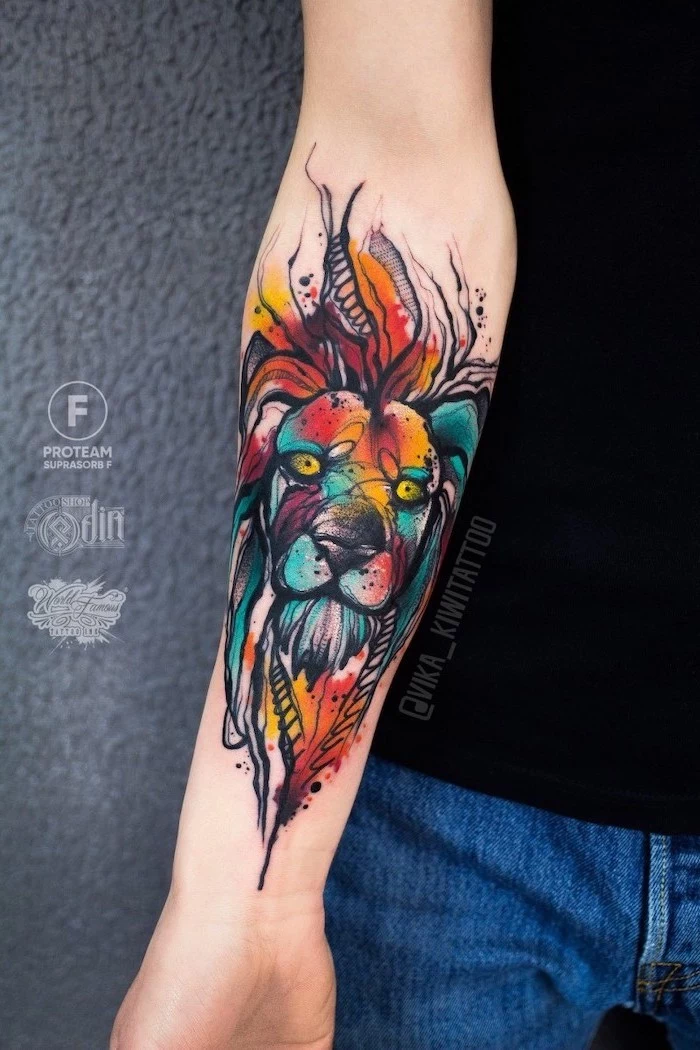
Black & Grey Realism: Creates a timeless, sculptural look, emphasizing shadow and texture. It tends to age very gracefully.
Watercolor Style: Uses vibrant splashes and bleeds of color for a dynamic, artistic effect. It’s expressive but may require more diligent sun protection to keep colors from fading.
Choose based on whether you want classic intensity or modern expressiveness.
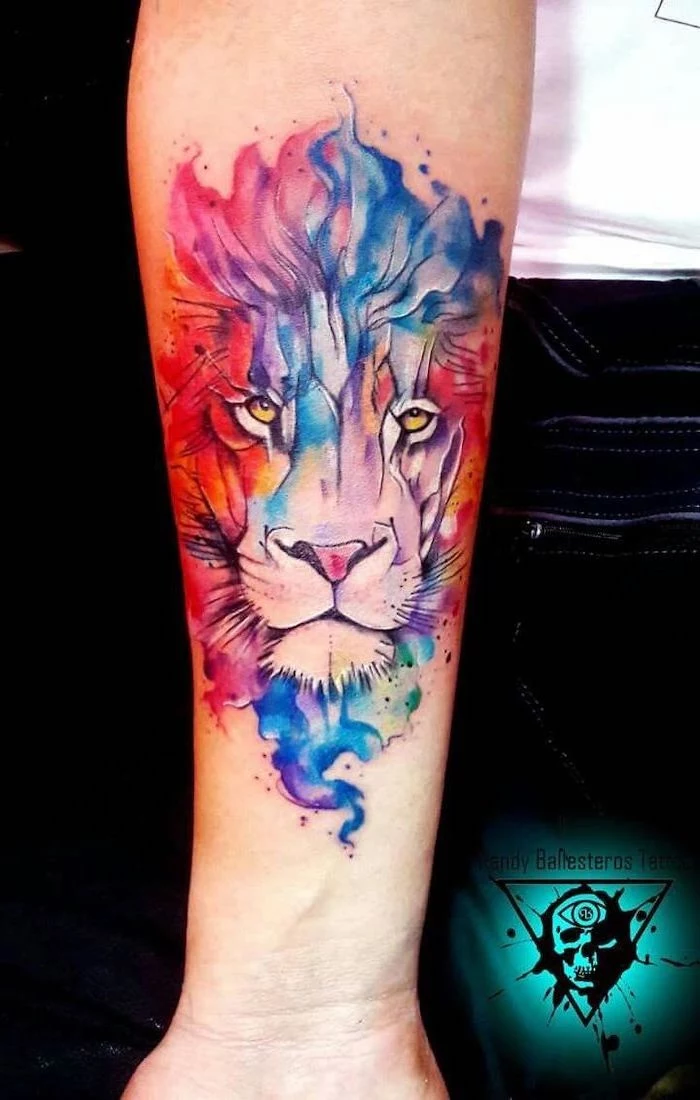
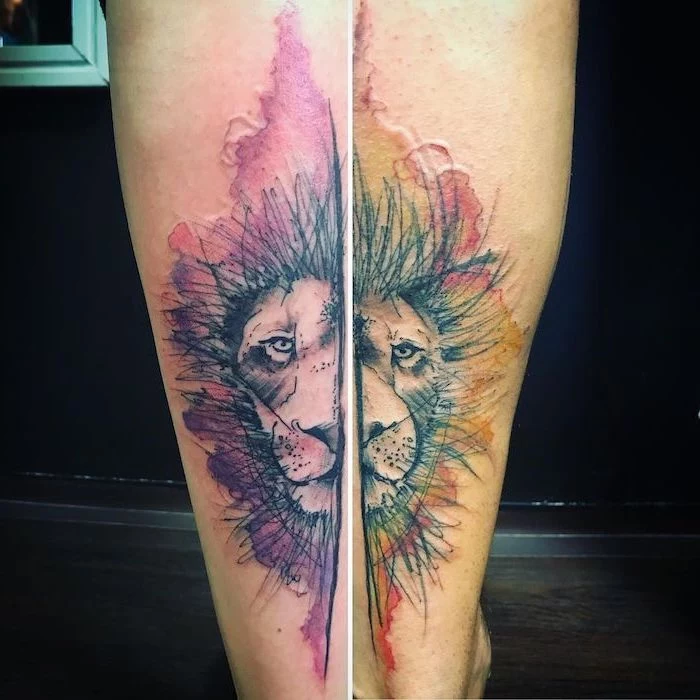
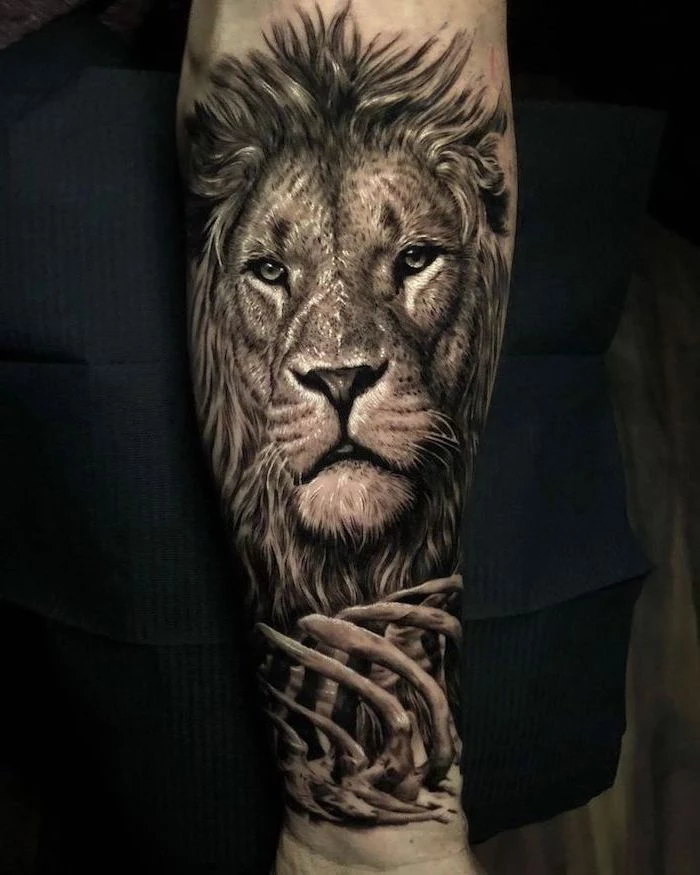
The ‘Lion of Judah’ is a potent ancient symbol in Abrahamic traditions, representing royalty, wisdom, and divine authority.
Incorporating this specific iconography elevates a tattoo from a personal emblem to a statement of deep historical or spiritual connection. If this resonates, mention it to your artist for a design rich in heritage.
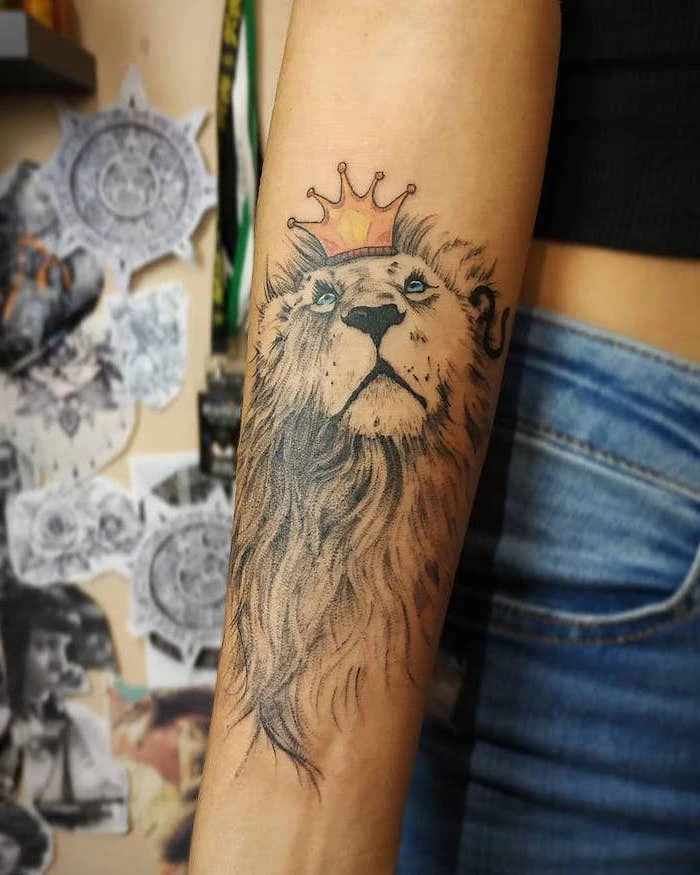
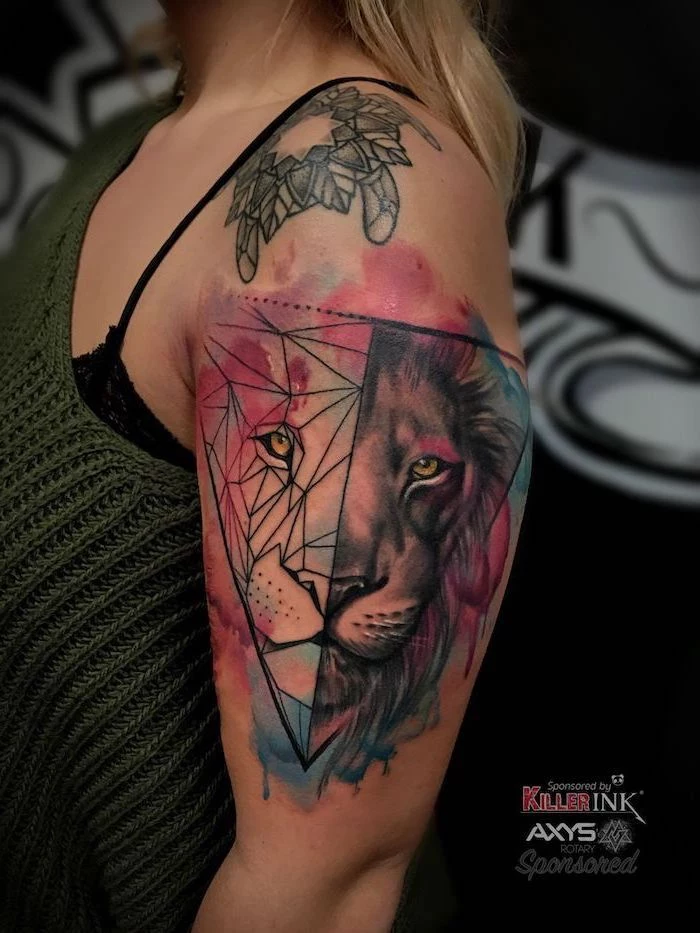
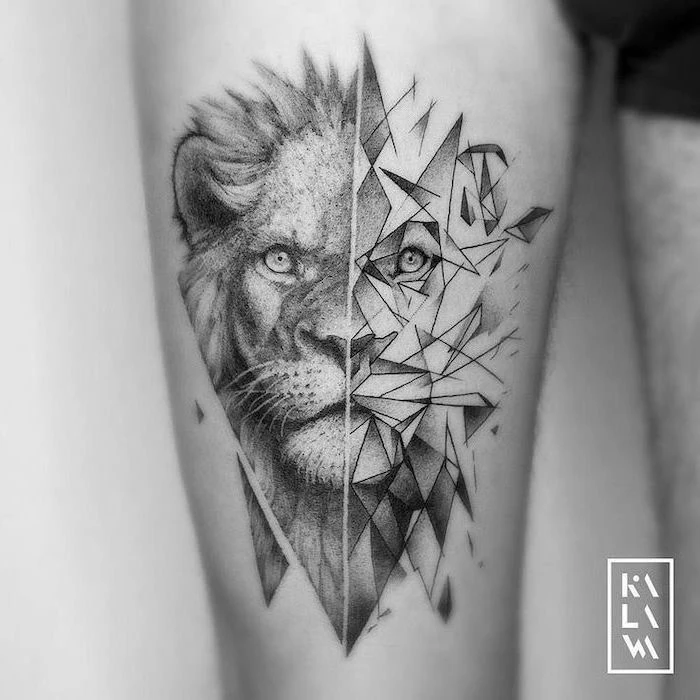
- Shows mastery over one’s own life and emotions.
- Explicitly reinforces themes of sovereignty and leadership.
- Can be customized to reflect your personal story (e.g., a simple crown for quiet authority, an ornate one for earned success).
The addition? A crown. It’s a classic pairing that leaves no doubt about the ‘kingly’ aspect of your tattoo.
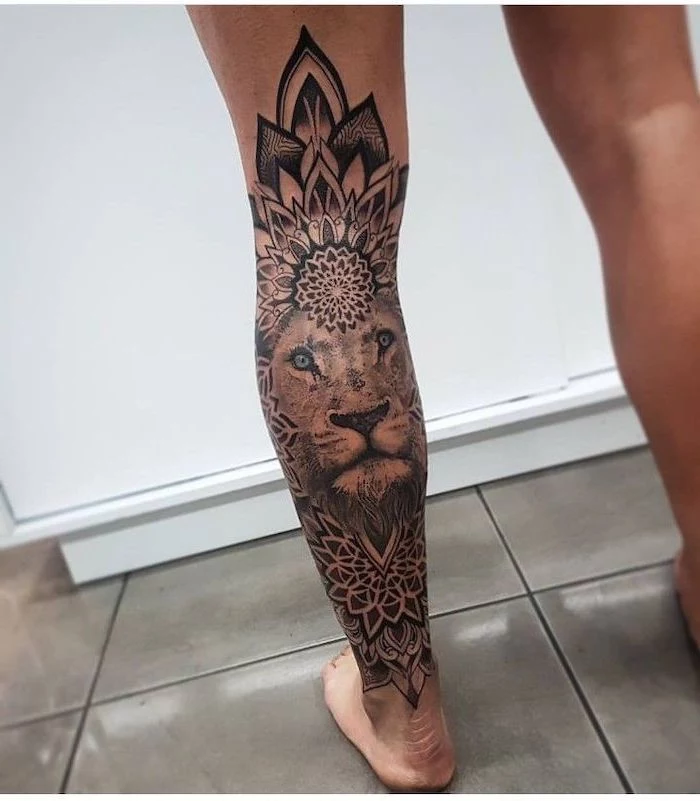
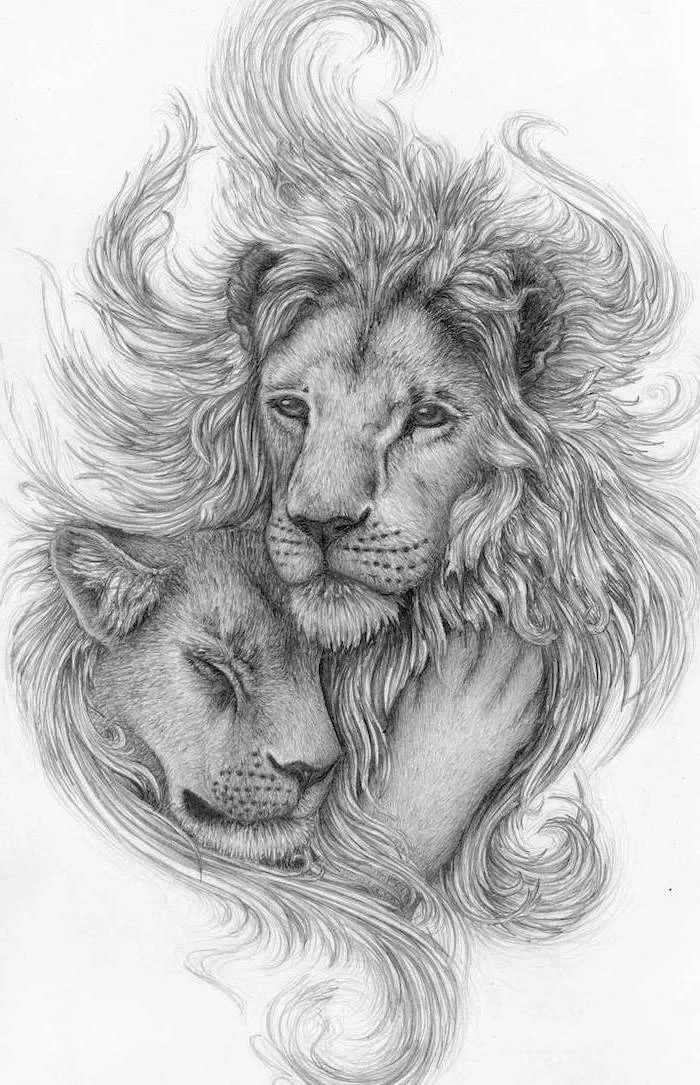
Don’t neglect the eyes. They are the soul of the piece. Whether you opt for piercing, colored eyes (a splash of blue or gold in a black and grey piece can be stunning), or let the artist render realistic, soulful amber, the gaze will define the lion’s entire expression.
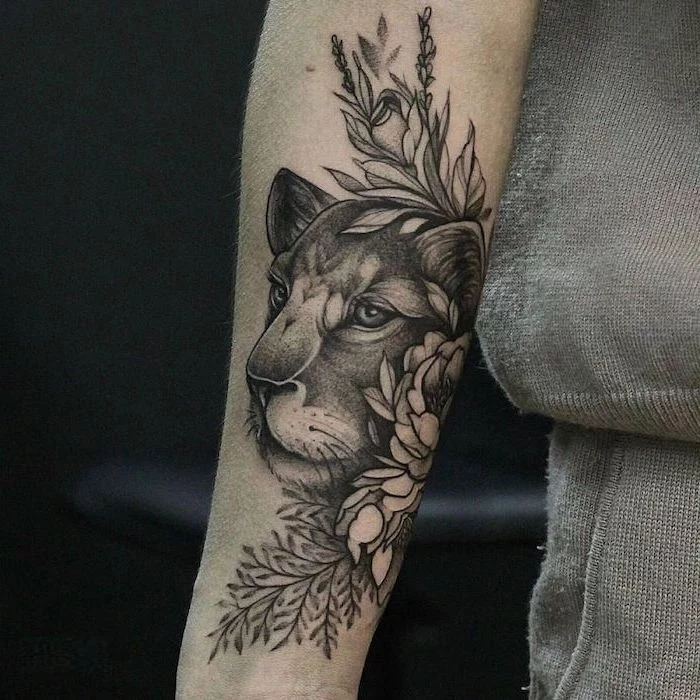
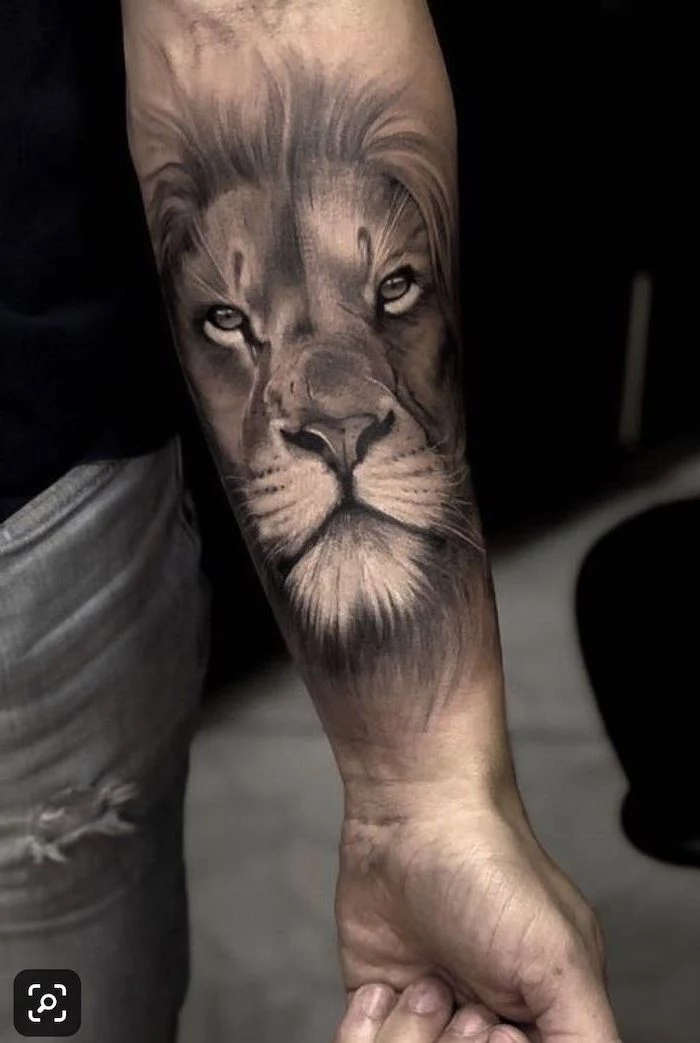
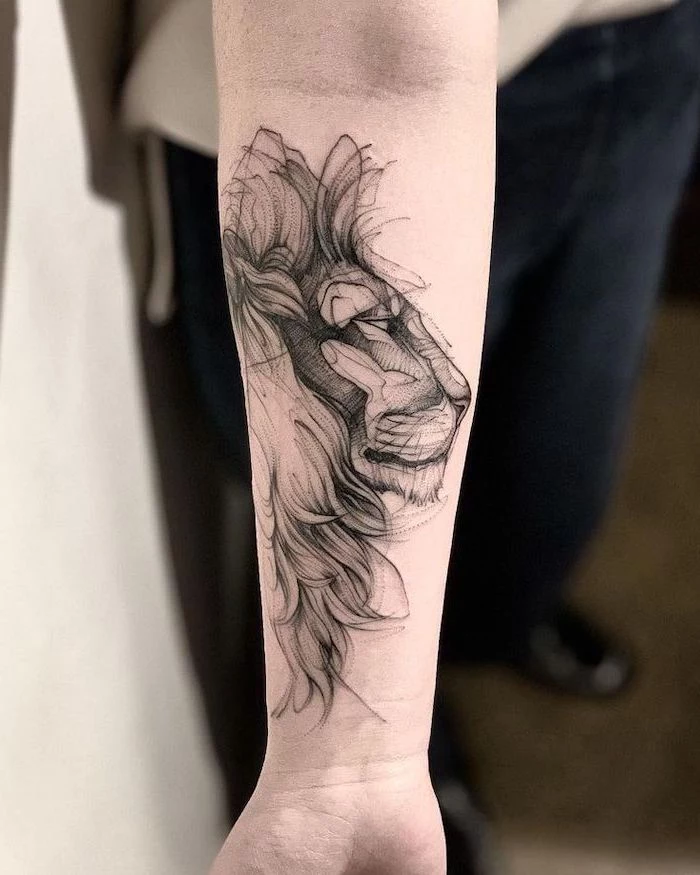
A note on aftercare products:
- For the initial healing phase, many artists now recommend a transparent adhesive film like Saniderm or Dermalize. It protects the fresh tattoo from bacteria and friction.
- Once the film is off, use a gentle, fragrance-free soap.
- For moisturizing, a dedicated tattoo balm like Hustle Butter Deluxe is excellent, but a thin layer of a simple ointment like Aquaphor also works wonders.
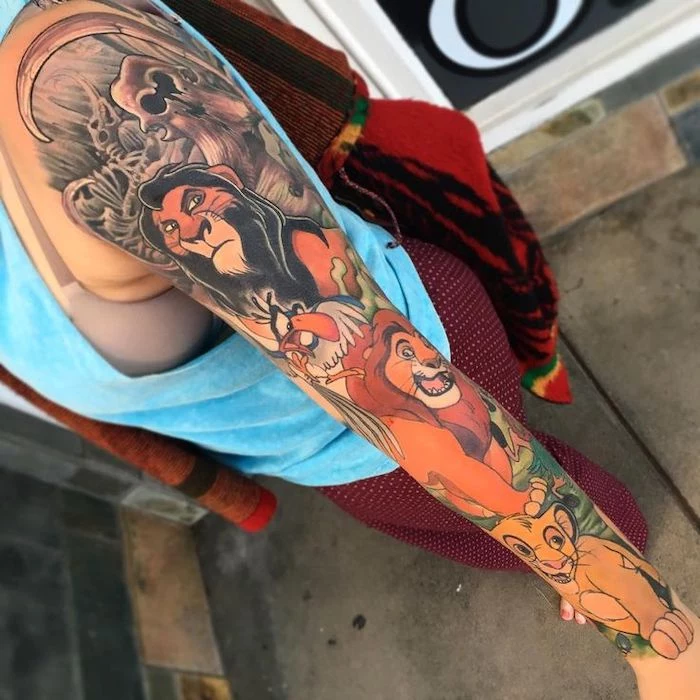
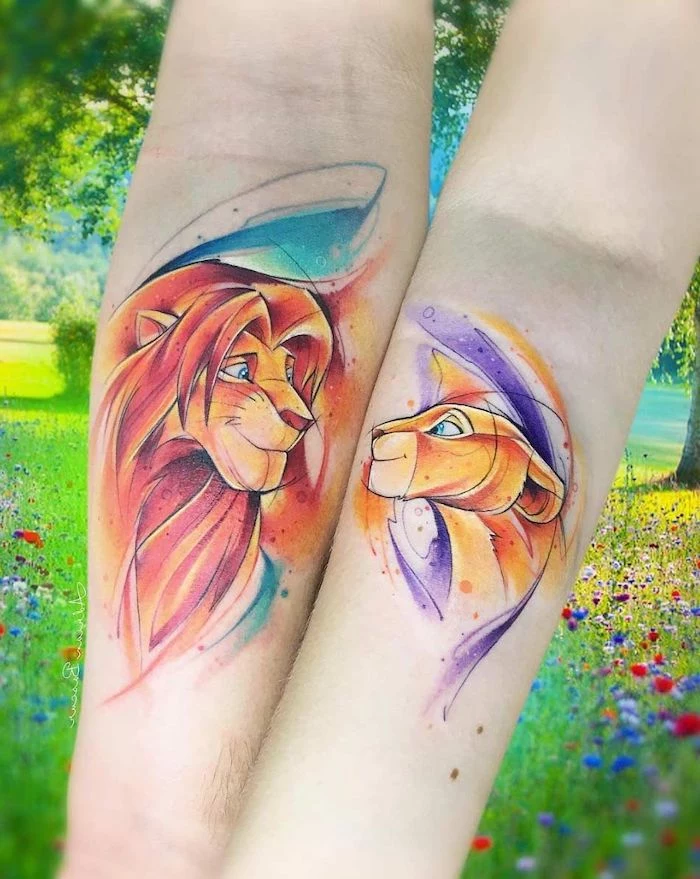
In astrology, the constellation Leo is ruled by the Sun itself, the center of our solar system.
This adds a layer of meaning related to vitality, generosity, and natural leadership. For those born between July 23 and August 22, a lion tattoo is more than a choice; it’s a stellar birthright.
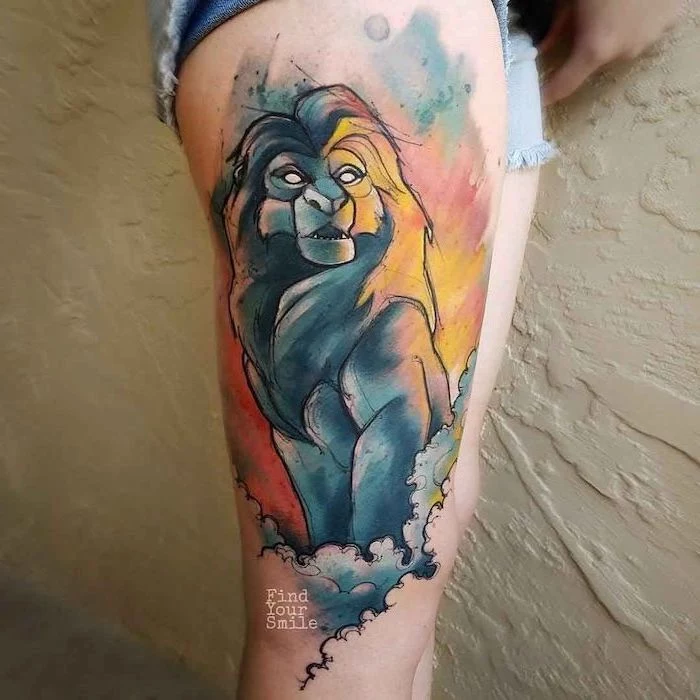
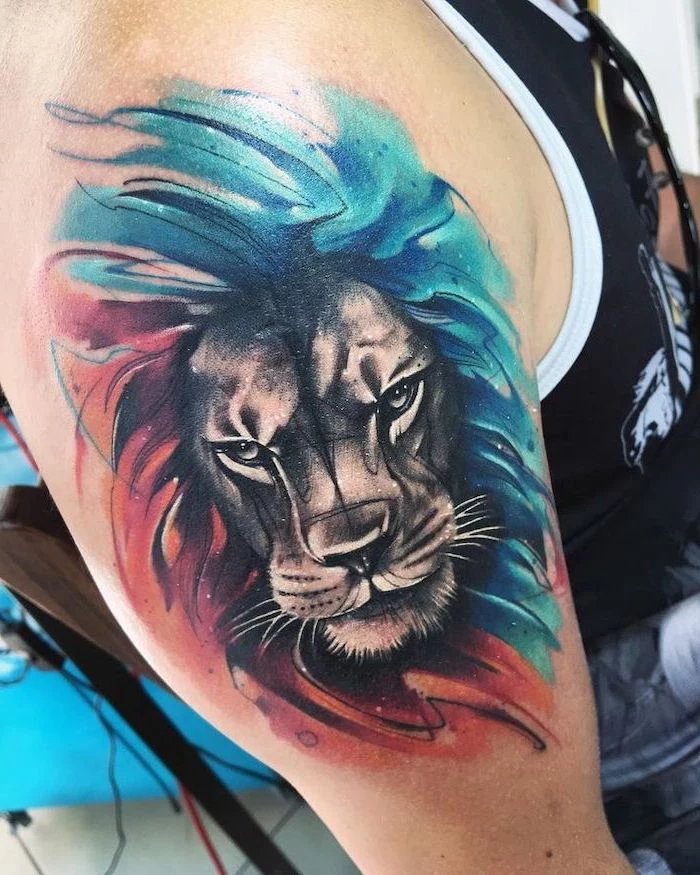

A quality lion tattoo is an investment. The price reflects the artist’s skill, experience, and the time required for a detailed piece. A simple, palm-sized design might be a few hundred dollars, while a full, realistic back piece can run into the thousands. Remember the old saying: ‘Good tattoos aren’t cheap, and cheap tattoos aren’t good’.
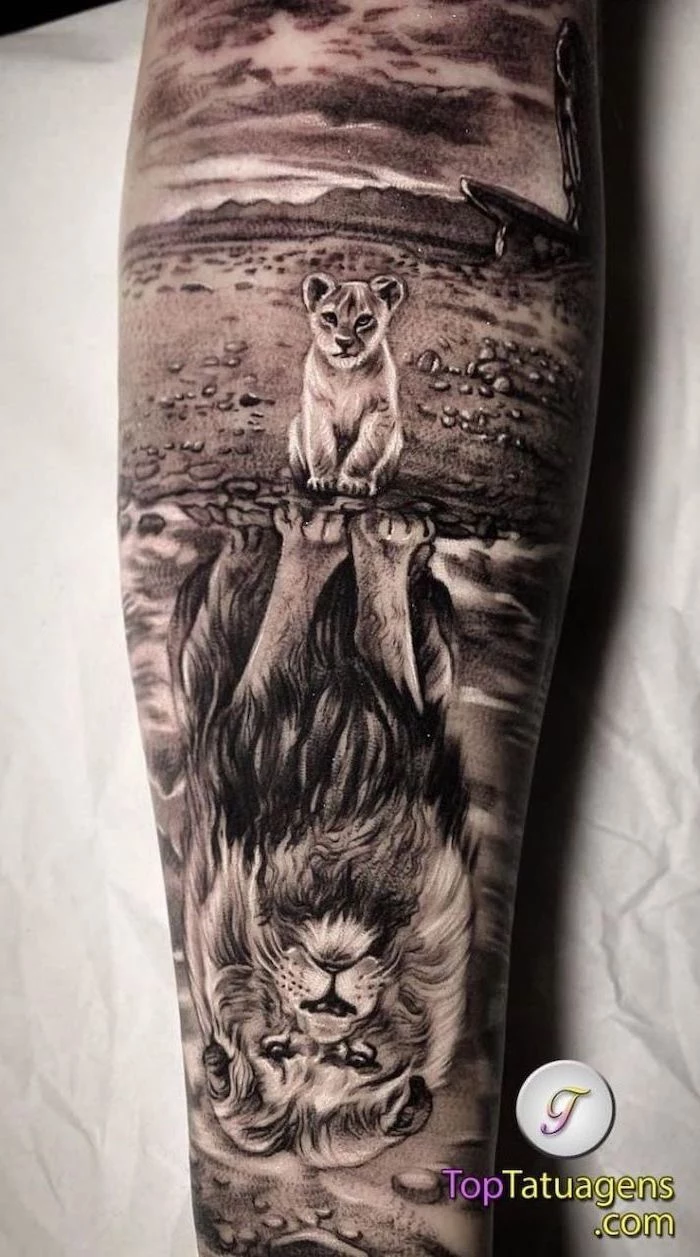
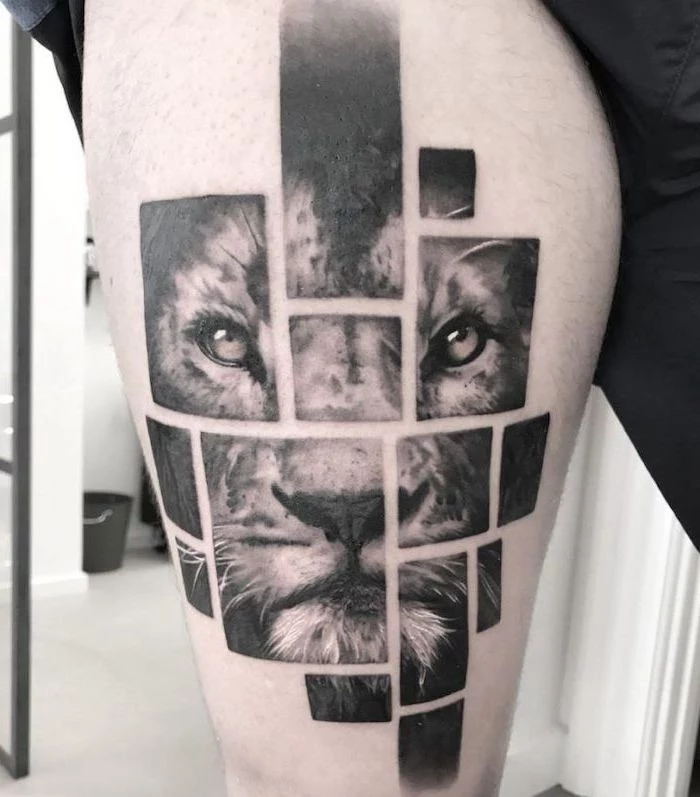
Look beyond photographs for inspiration. Study the stylized lions in Assyrian stone reliefs, medieval heraldry, or the powerful forms of Chinese guardian lions (Foo Dogs). These ancient interpretations can lead to a more unique and artful tattoo that feels timeless.
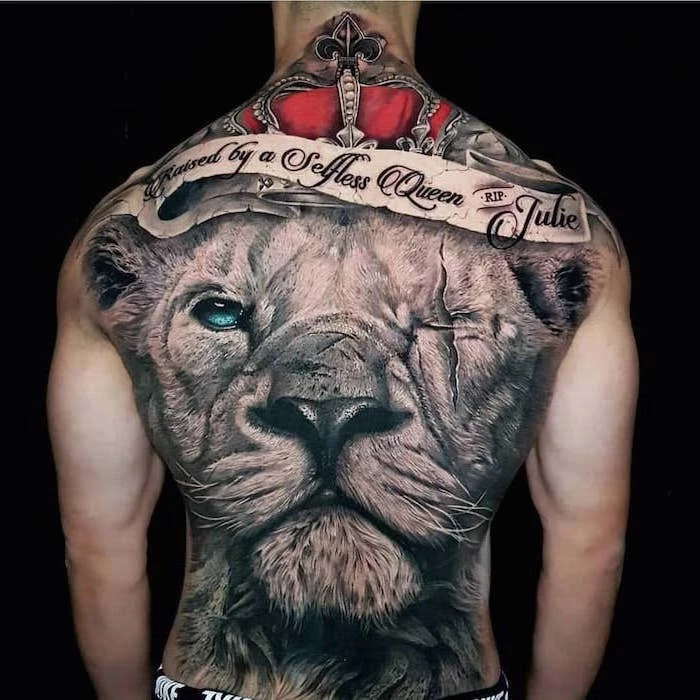
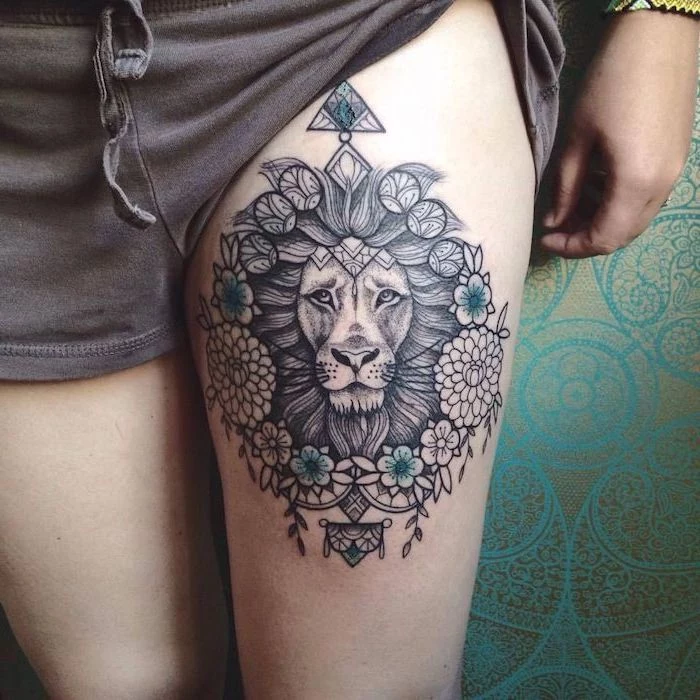
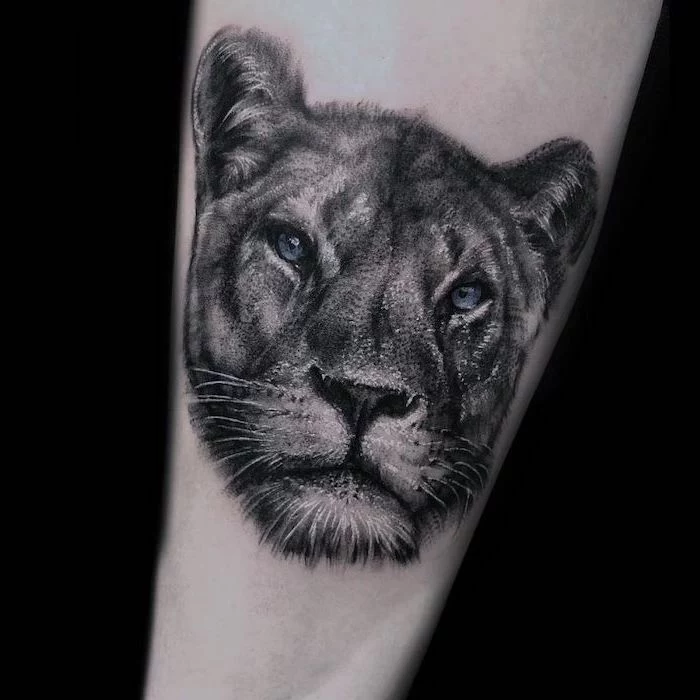
How do I pick the right artist for my lion tattoo?
Don’t just search for ‘tattoo shops near me’. Search Instagram for hashtags like #liontattoo, #realismtattoo, or #geometrictattoo. Look for an artist whose portfolio has multiple examples of high-quality lions in the specific style you want. A great portrait artist isn’t always a great geometric artist, and vice versa.
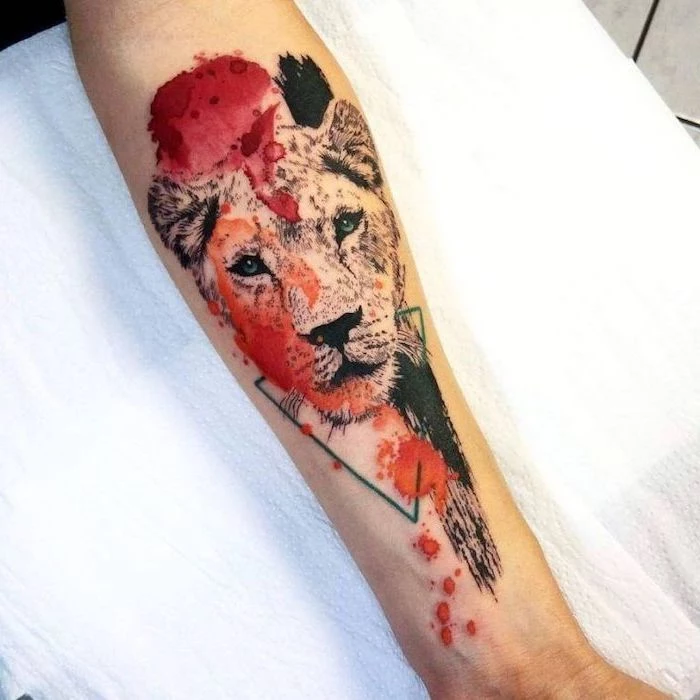
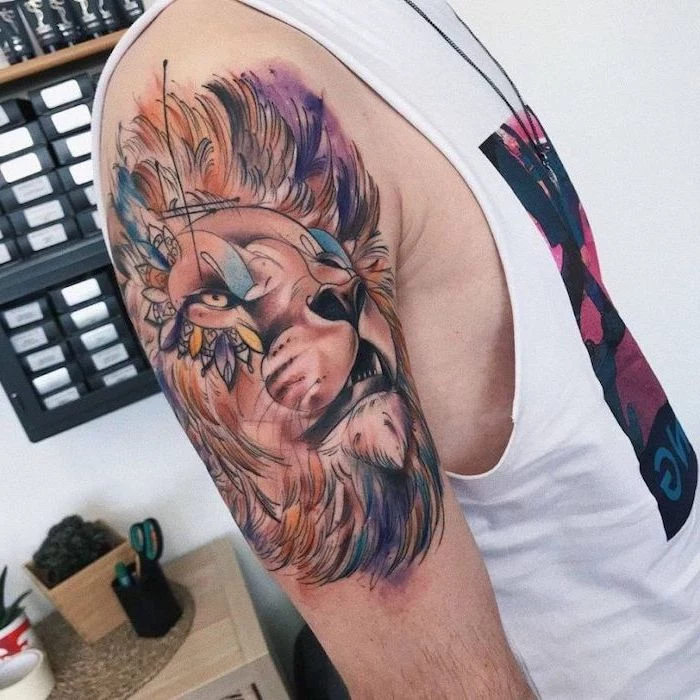
Think about flow. A great artist won’t just stamp a lion onto your skin; they’ll design it to complement your anatomy. A lion wrapping around a forearm, a mane flowing over a shoulder blade, or a face roaring from a thigh—the best tattoos look like they were born to be there.
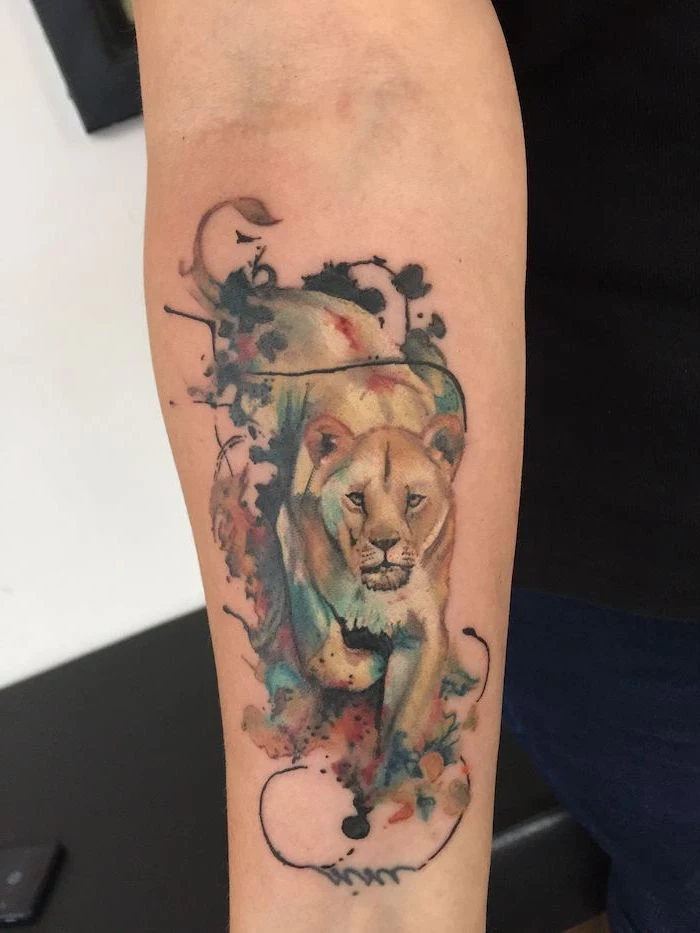
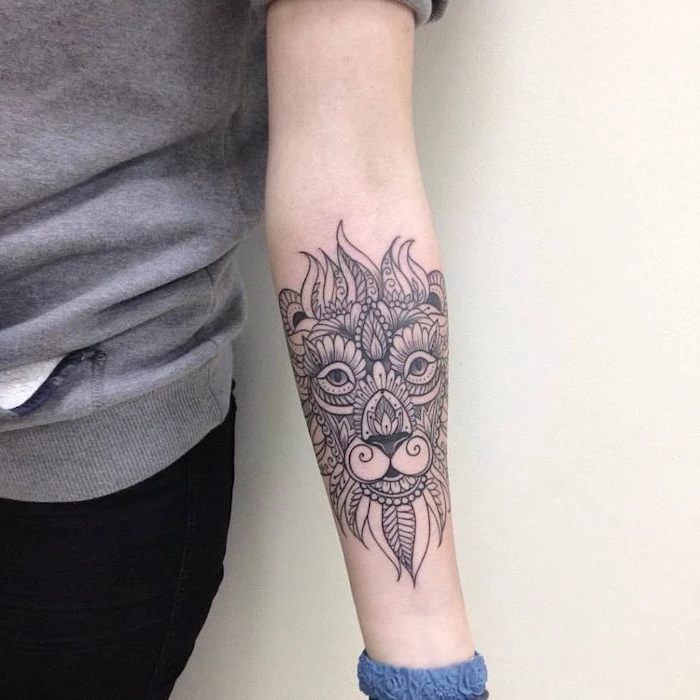
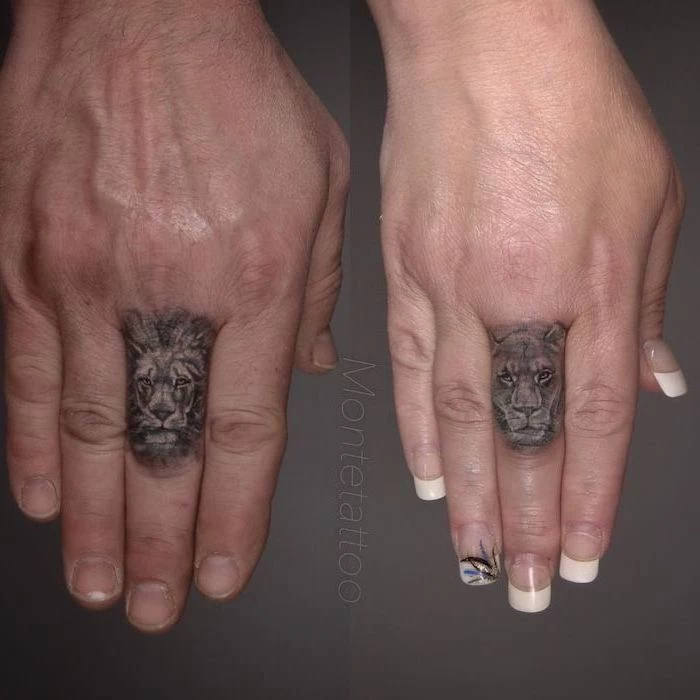
Lion with Roses: This combination often represents the balance between strength and beauty, or love and protection. It can be a tribute to a gentle strength or a fierce love.
Lion with a Clock: This pairing frequently symbolizes a specific, pivotal moment in time, the value of time, or a timeless, enduring strength. A broken clock can mean stopping time or overcoming a past event.
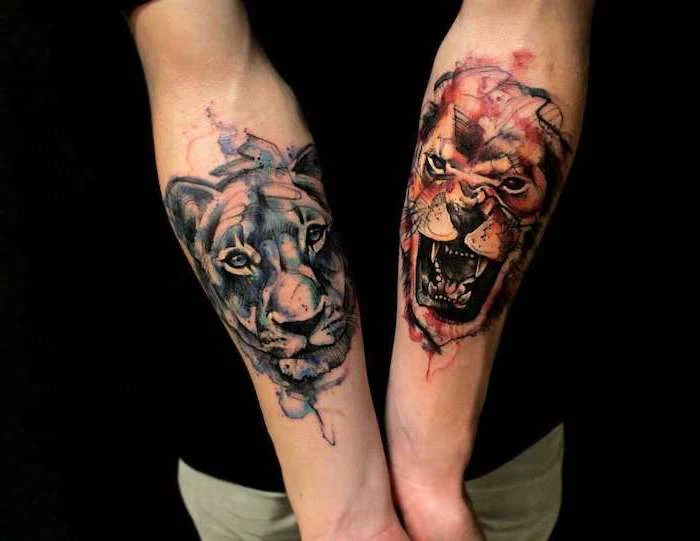
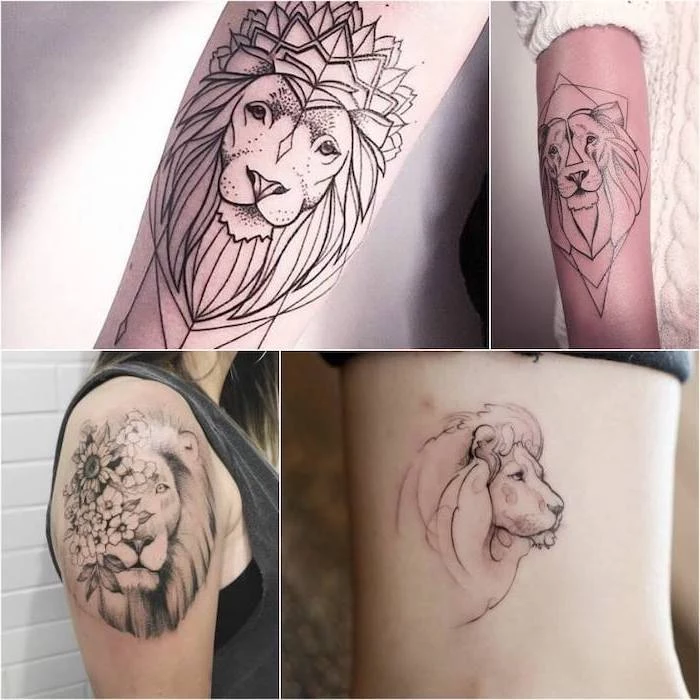
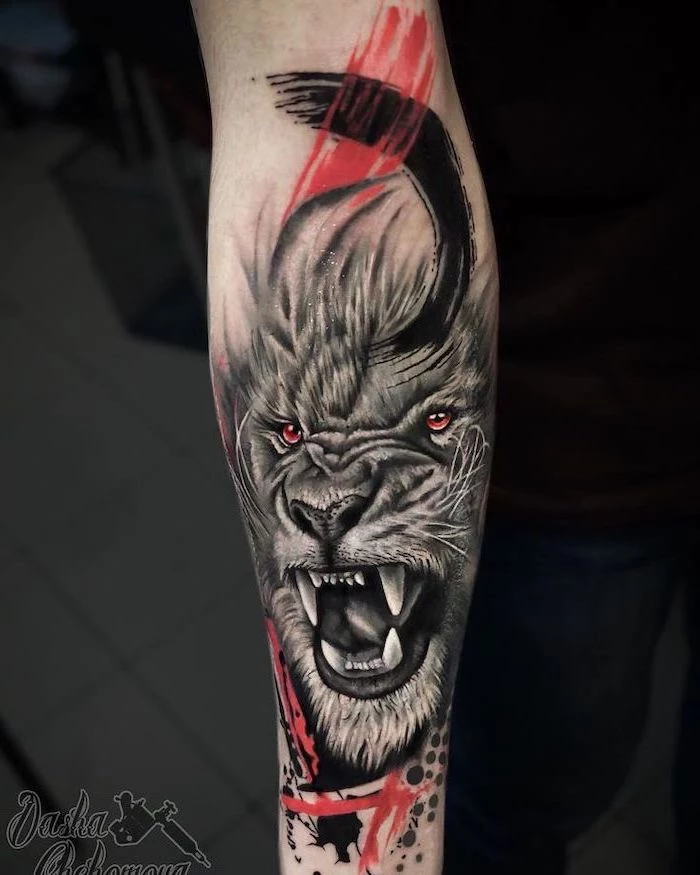
A 2020 study found that some popular red tattoo inks contained nanoparticles that could be more reactive under sunlight.
While modern inks from reputable brands like Eternal Ink or Intenze are rigorously tested, this highlights the importance of sun protection. A high-SPF, broad-spectrum sunscreen is the best long-term care you can give your tattoo, especially one with vibrant colors.
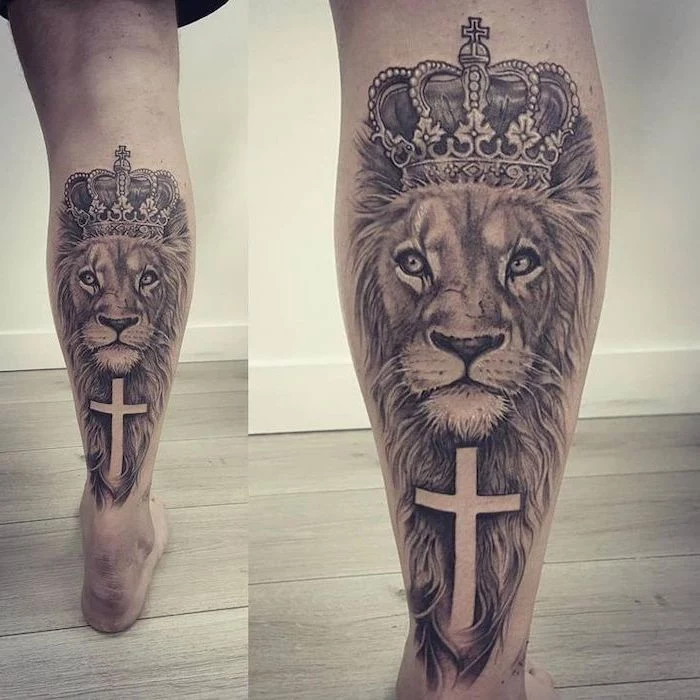
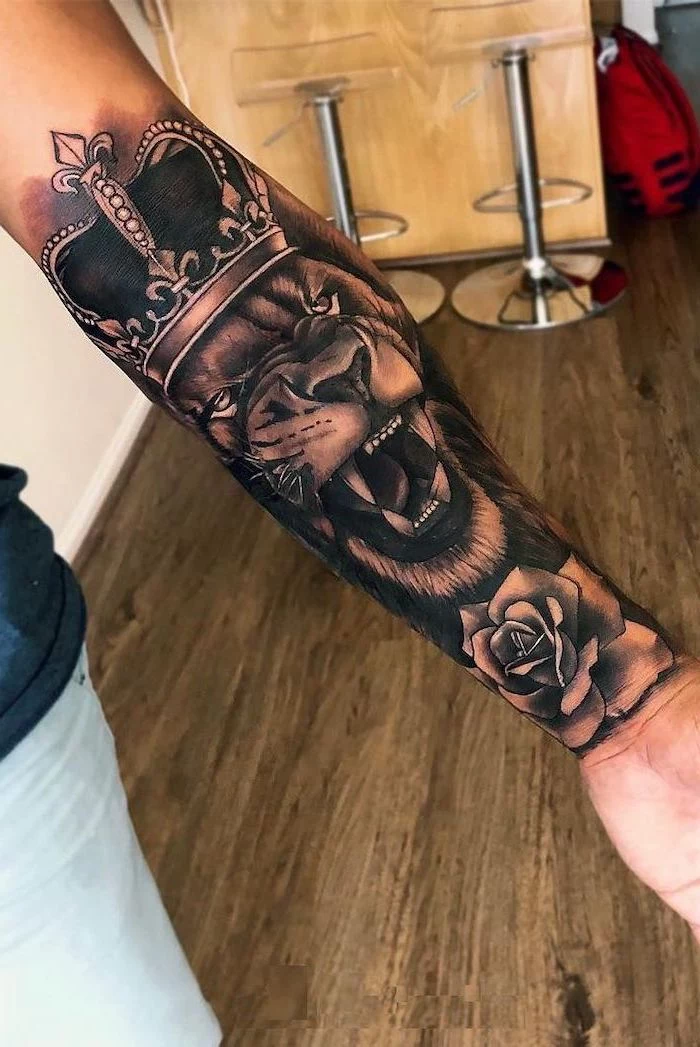
- Adds a modern, intellectual edge to an ancient symbol.
- Allows for stunning visual effects with symmetry and patterns.
- Can seamlessly integrate personal symbols like mandalas or sacred geometry.
The style? Geometric. It deconstructs the lion’s form into a complex network of lines and shapes for a truly contemporary and mesmerizing result.
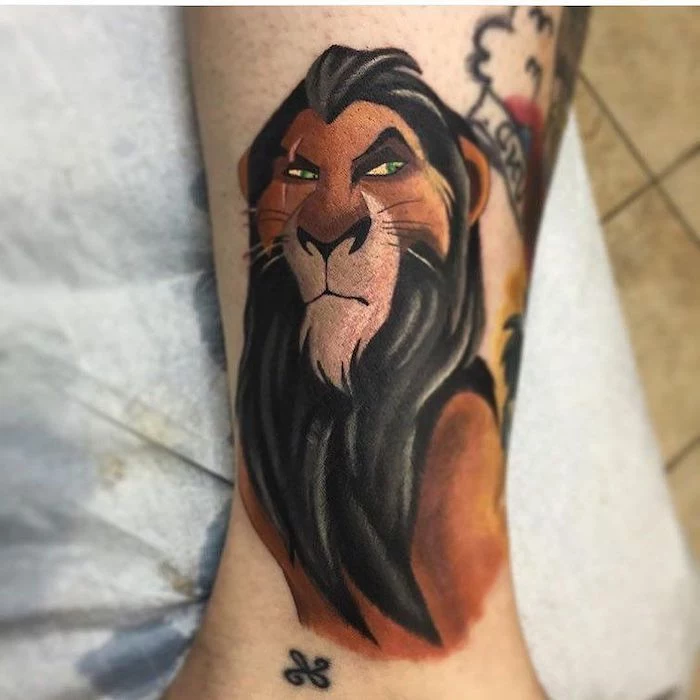
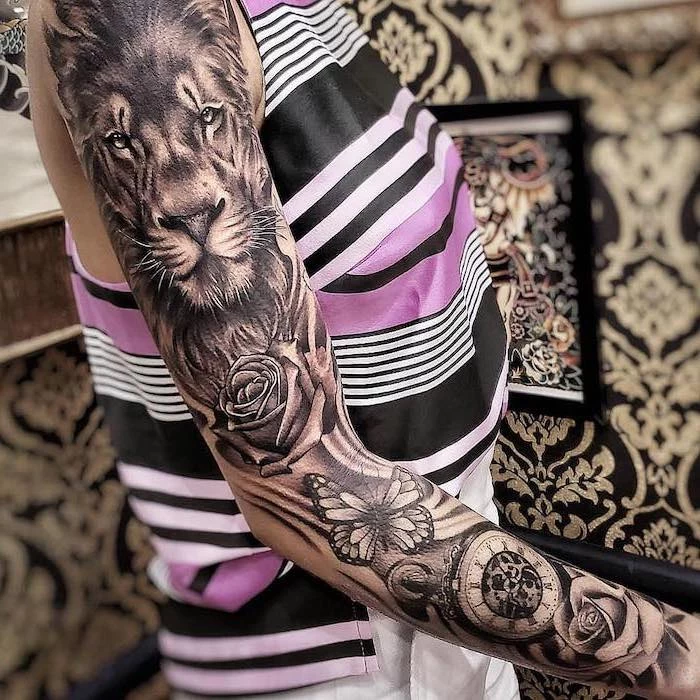
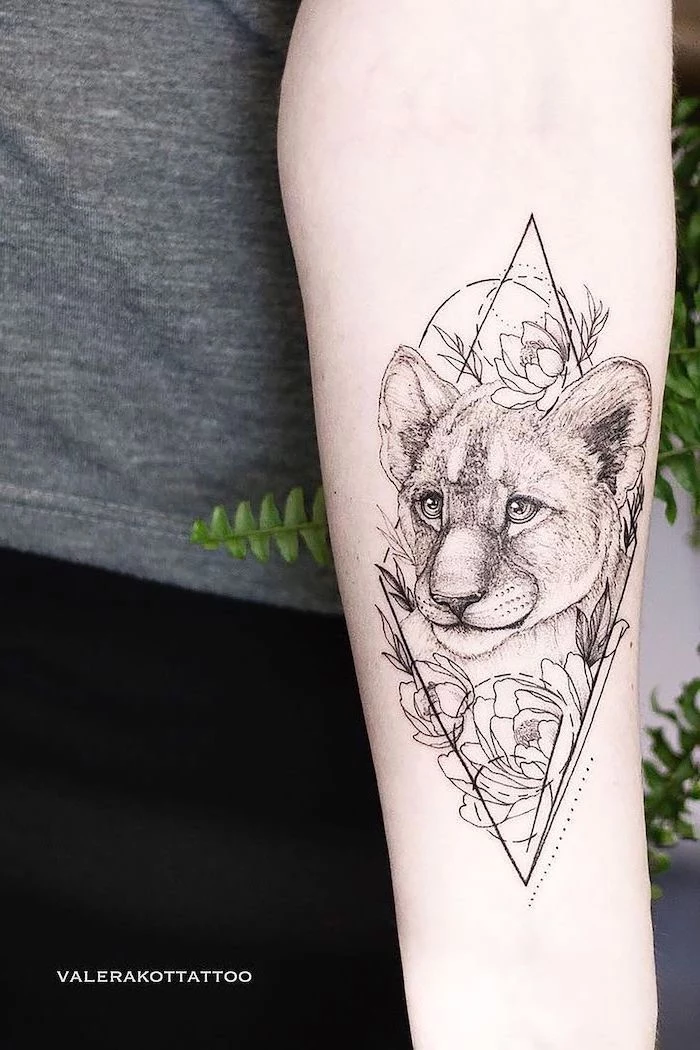
Don’t get lost in the details… at first. A design that looks amazing on a screen might be too ‘busy’ for a tattoo, especially if it’s small. The bold, main features of the lion should be readable from a few feet away. Trust your artist’s advice on simplifying a design for maximum impact and longevity.
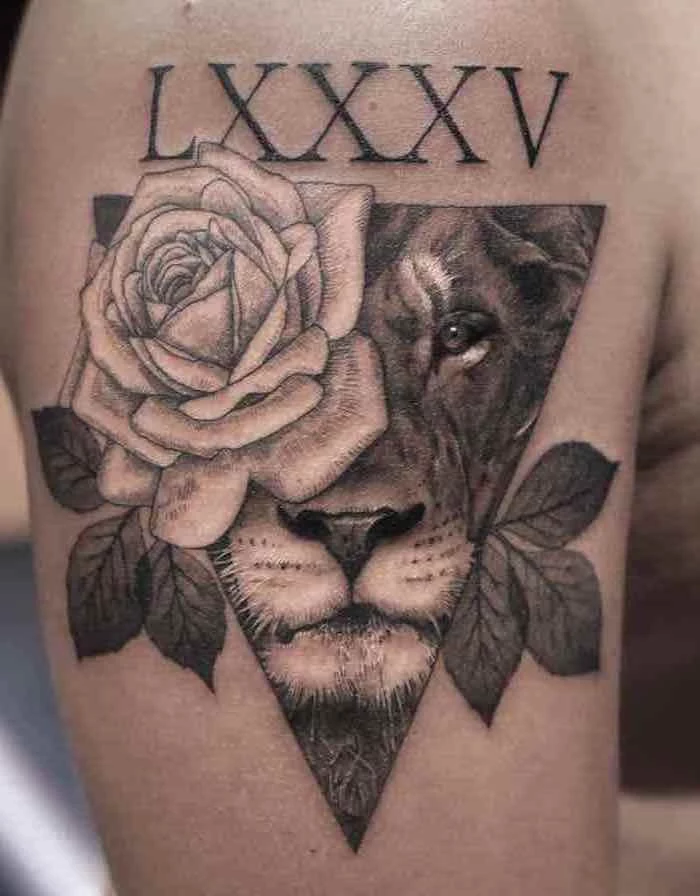
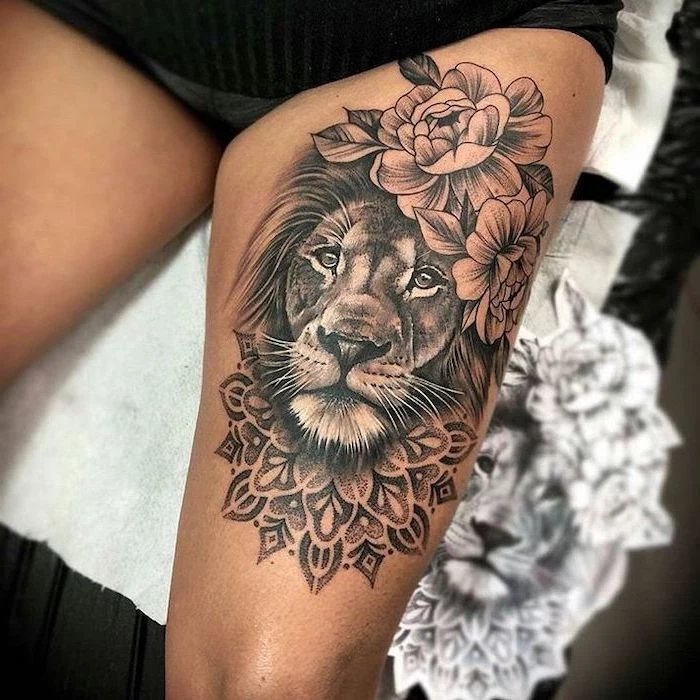
The choice between a male lion and a lioness is a profound one. The male lion, often solitary or leading, represents individual strength and authority. The lioness, who does the majority of the hunting and lives in a tight-knit pride, symbolizes community, strategic intelligence, and fierce protection of family.
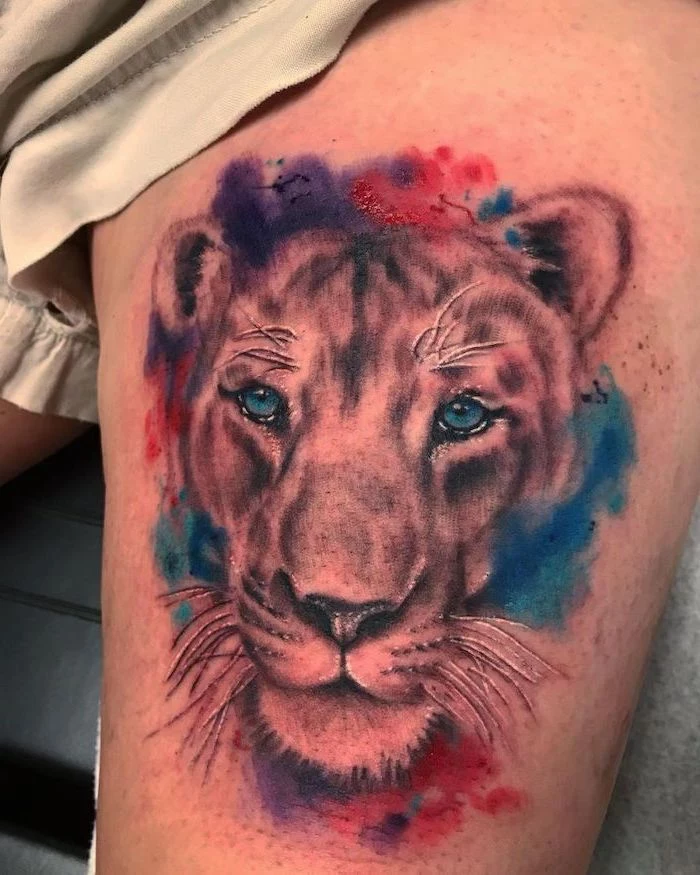
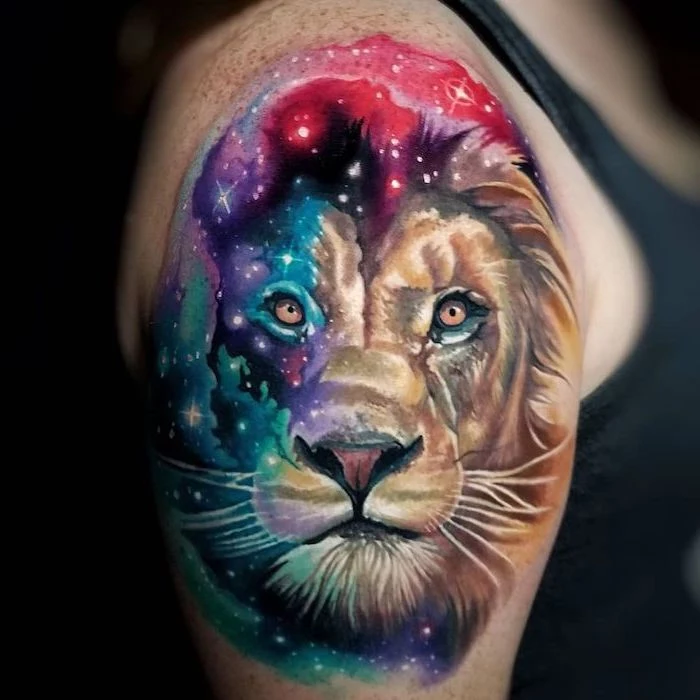
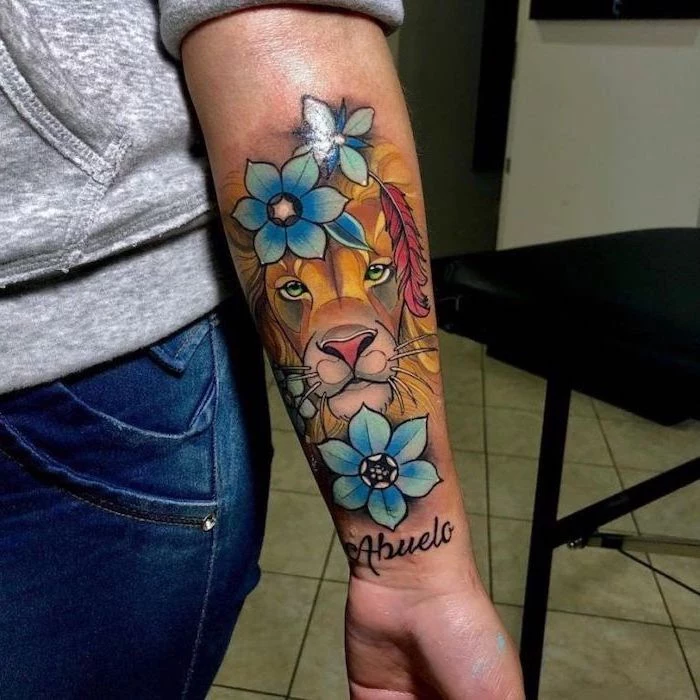
Your future self will thank you for this: Once your tattoo is fully healed, make applying a high-SPF sunscreen a non-negotiable habit. UV rays are the primary cause of ink fading and lines blurring over the decades. Protecting your lion from the sun is the single best thing you can do to keep it looking bold and crisp for life.
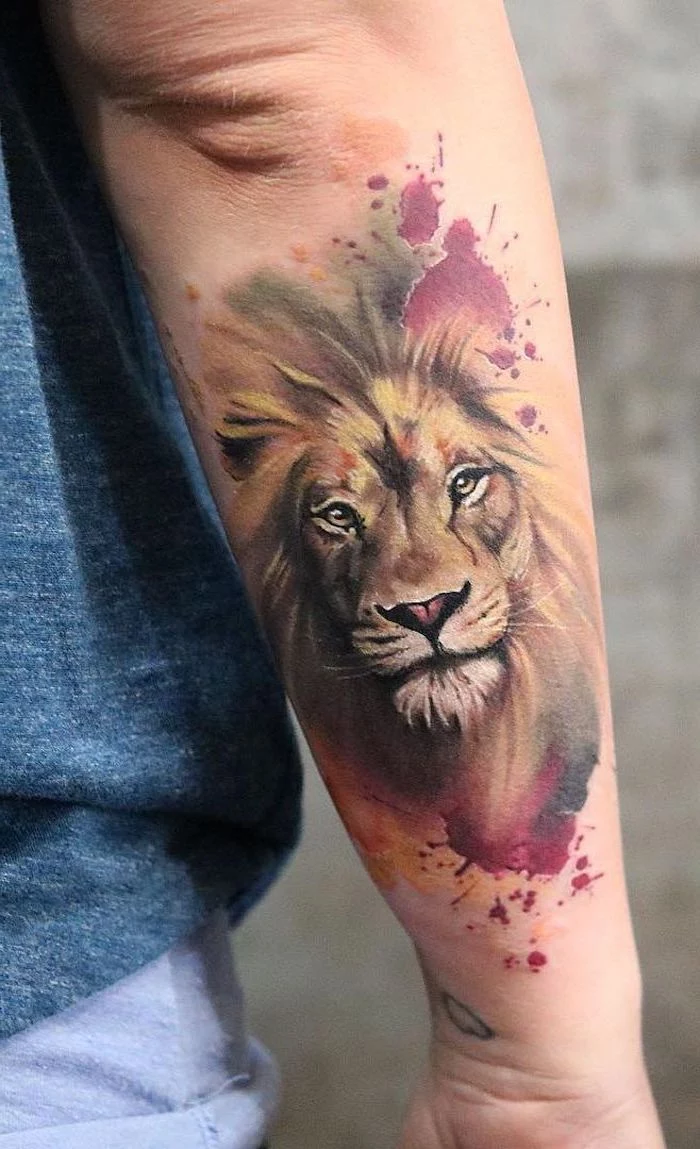
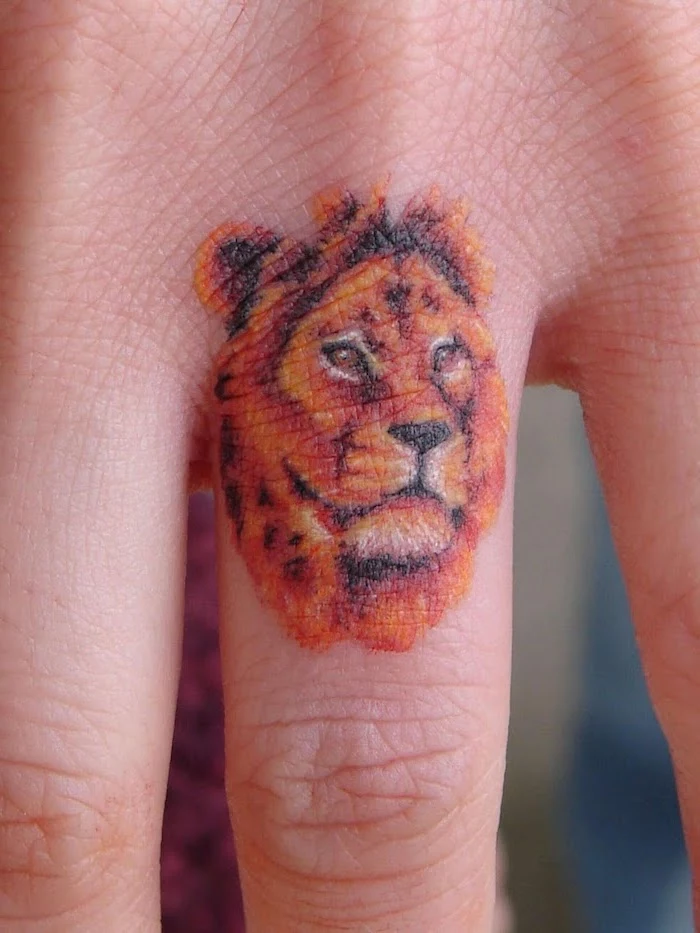
Can a lion tattoo be covered up later?
Yes, but it’s difficult. The large areas of dark shading, especially in the mane, make cover-ups challenging. Your options would be a much larger, much darker tattoo, or several expensive and painful laser removal sessions first. It’s a powerful reason to be 100% sure of your design and artist from the start.
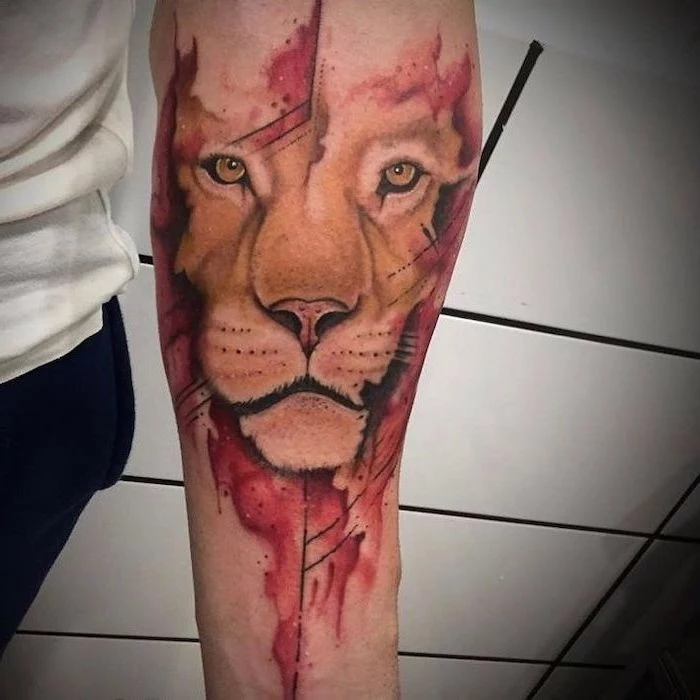
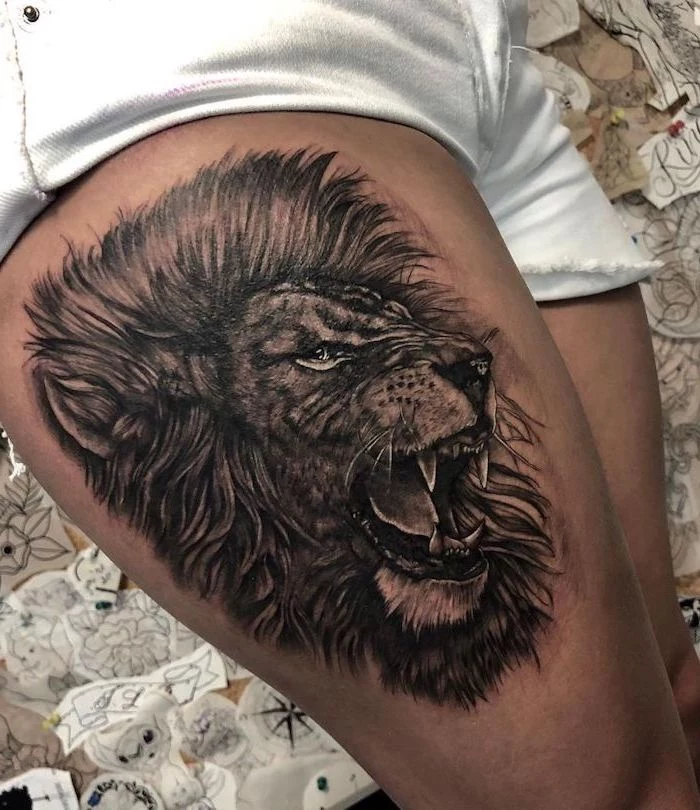
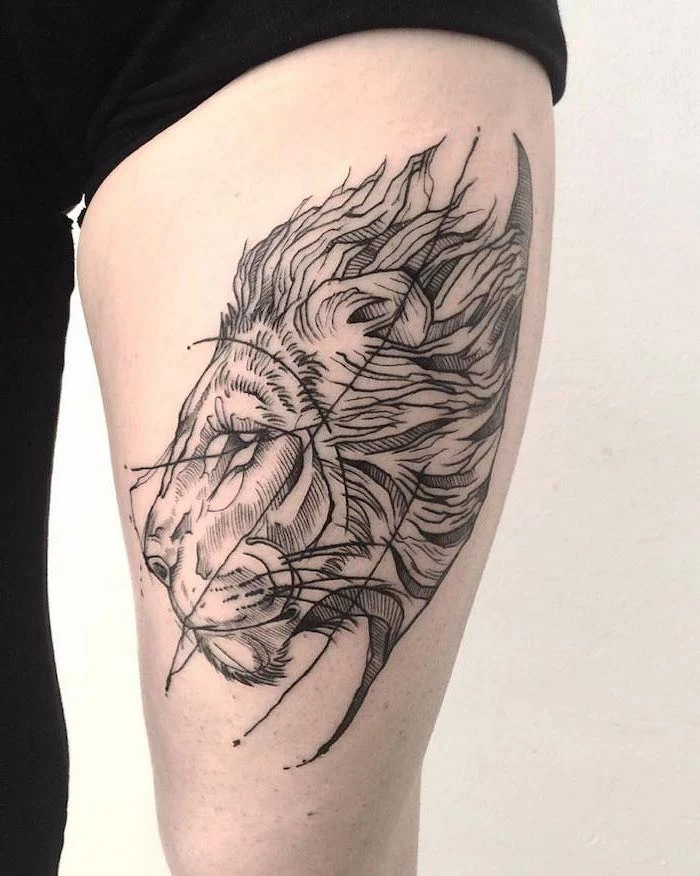
Before your consultation, do this simple exercise:
- Write down three words that you want your lion to embody (e.g., ‘calm’, ‘fierce’, ‘wise’).
- Find one or two elements you might want to add (e.g., ‘crown’, ‘roses’).
- Know the exact placement and approximate size in inches or centimeters.
This preparation helps the artist understand your vision and design something truly personal for you.
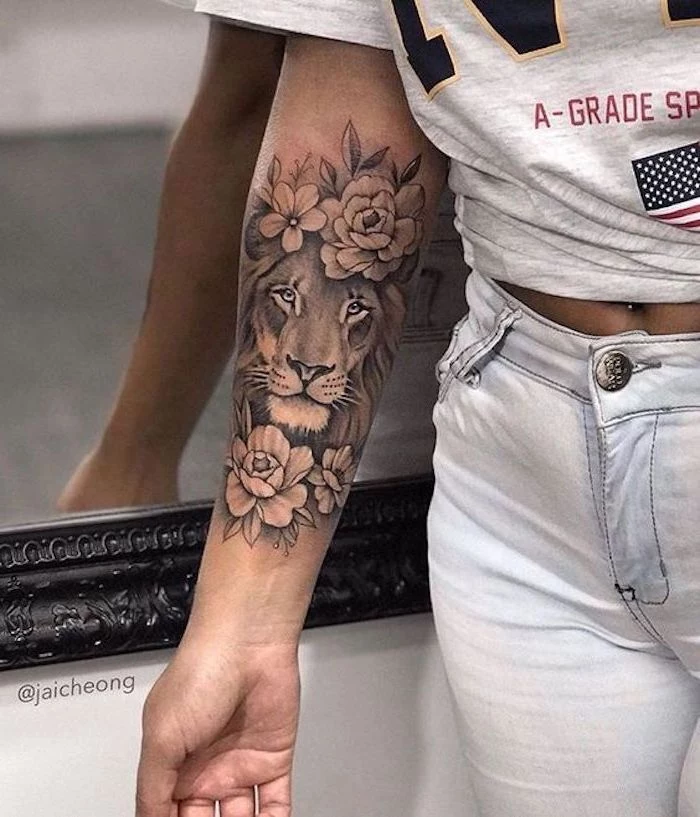
The famous lions guarding the entrance to the Art Institute of Chicago are officially unnamed, but their sculptors nicknamed them: the south lion ‘stands in an attitude of defiance,’ while the north lion is ‘on the prowl.’
This perfectly illustrates how even subtle differences in posture can convey entirely different meanings. Which attitude does your lion have?
